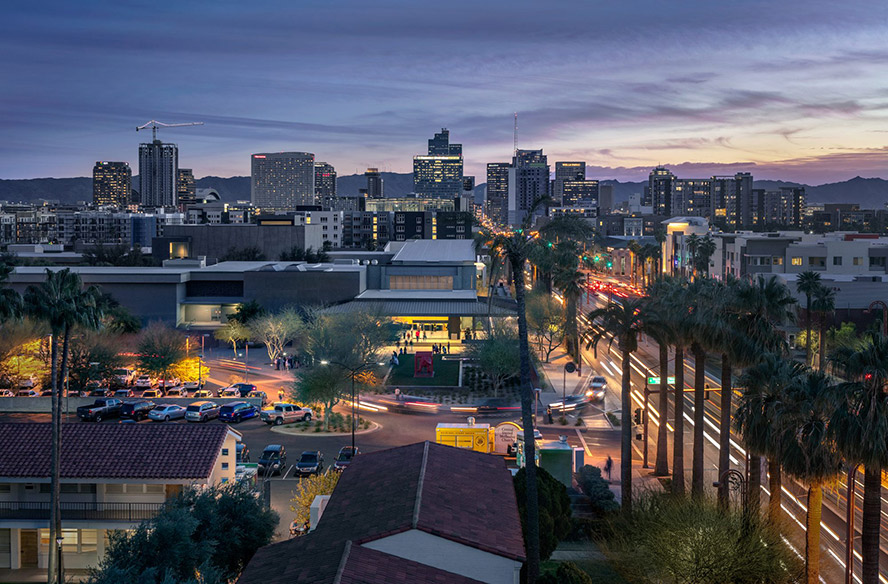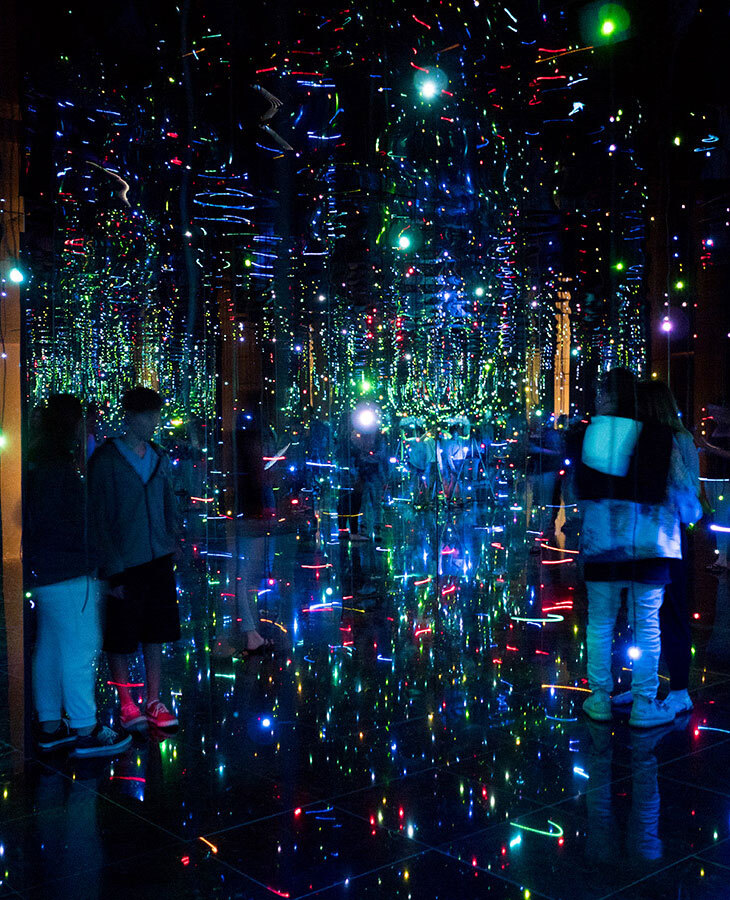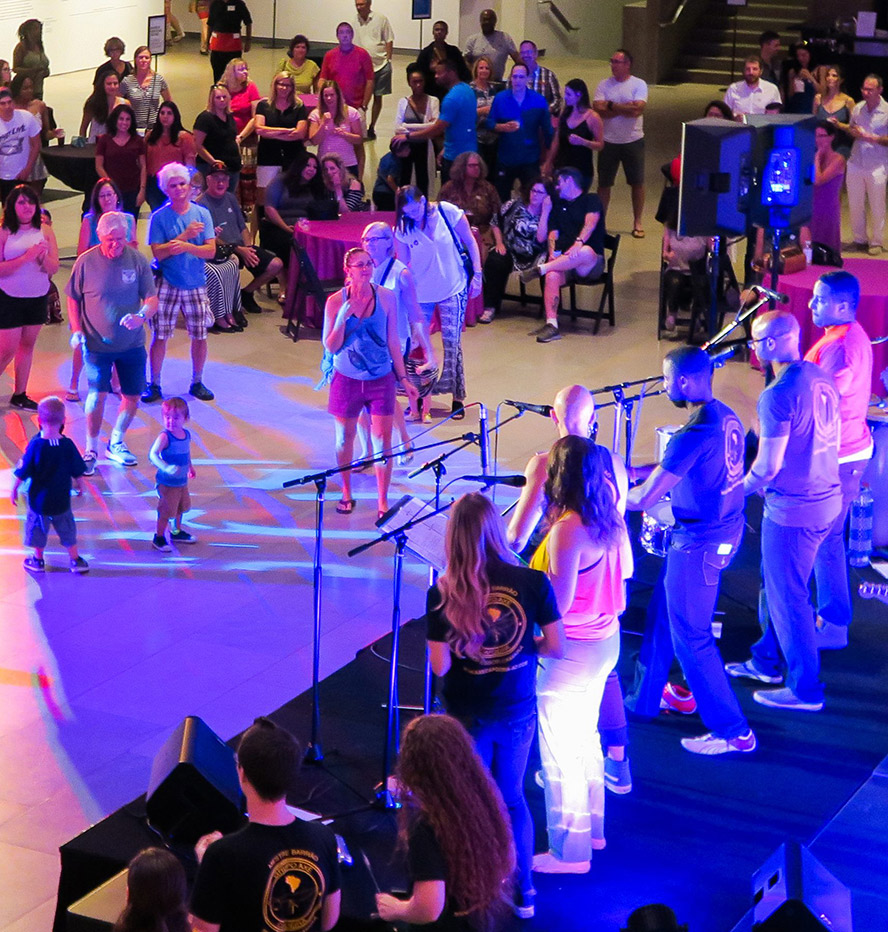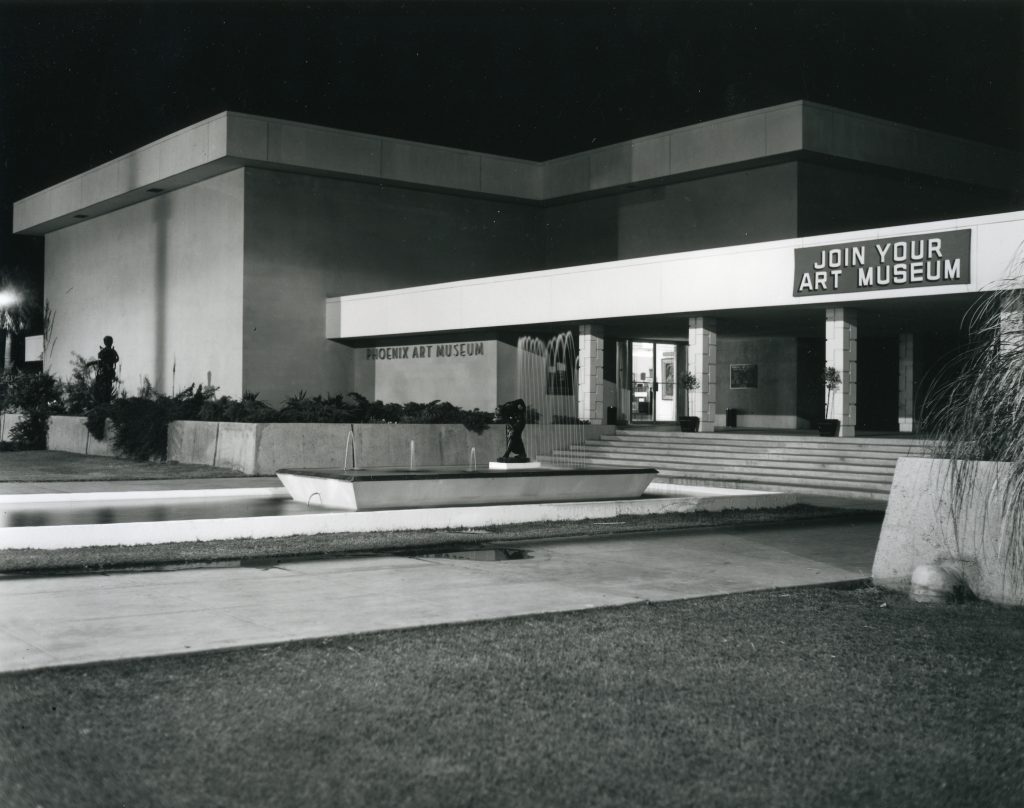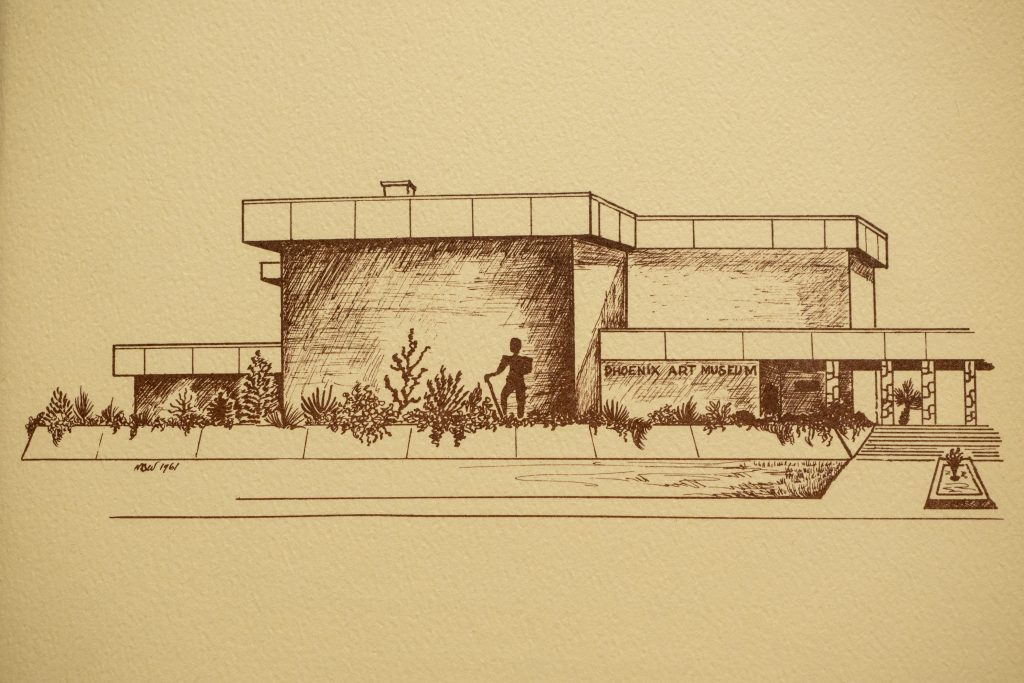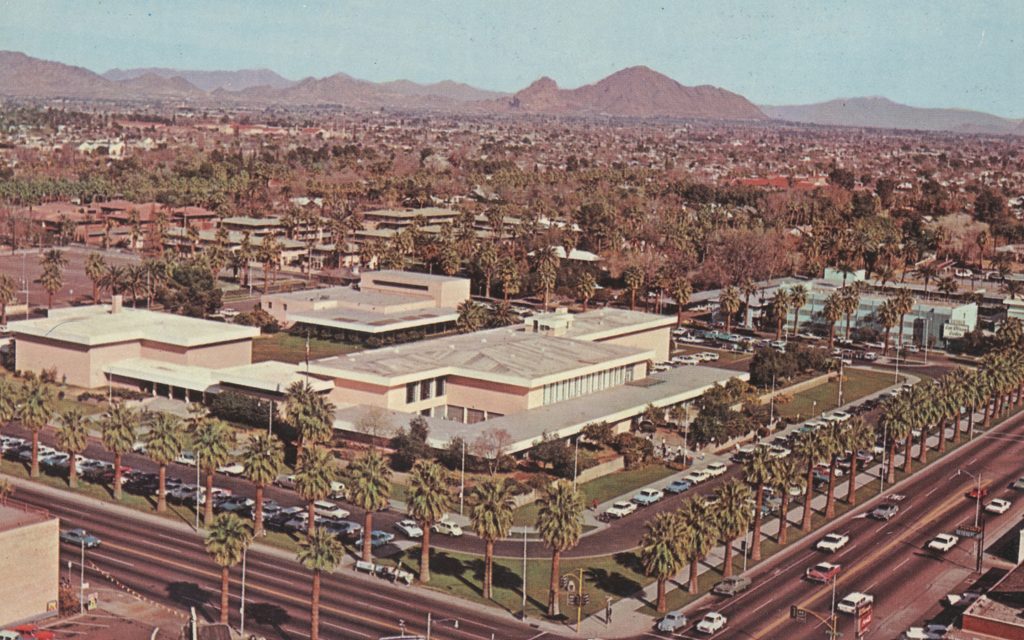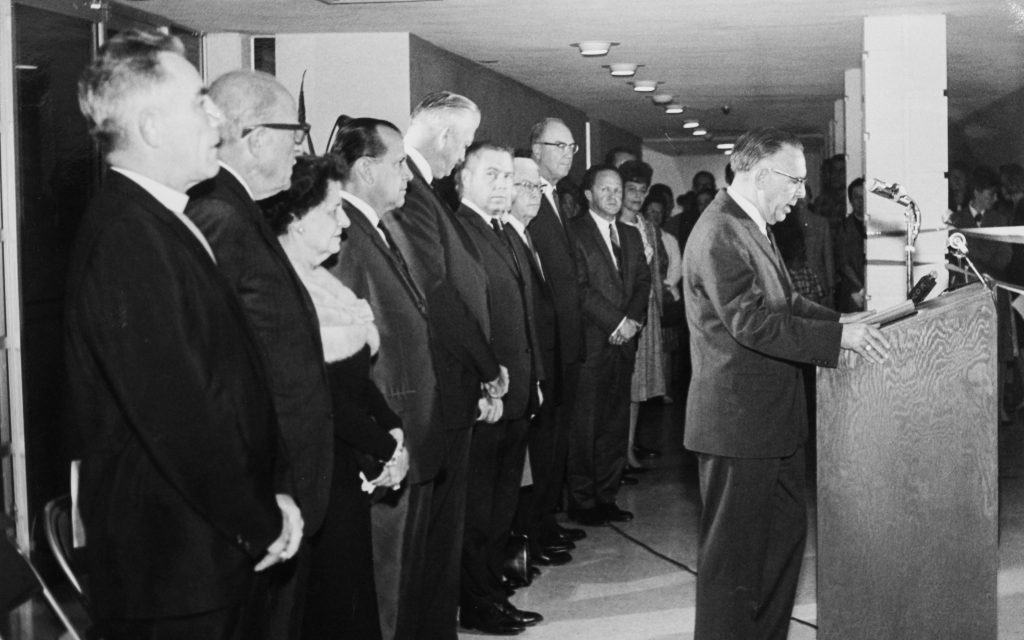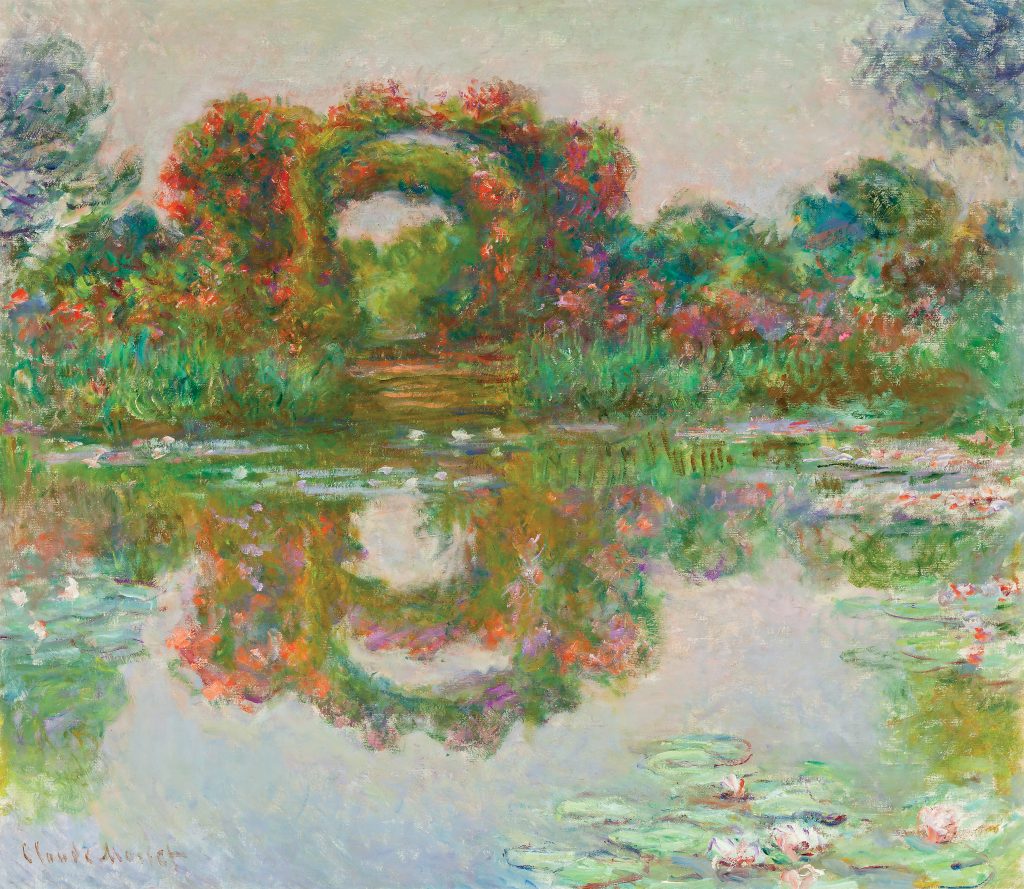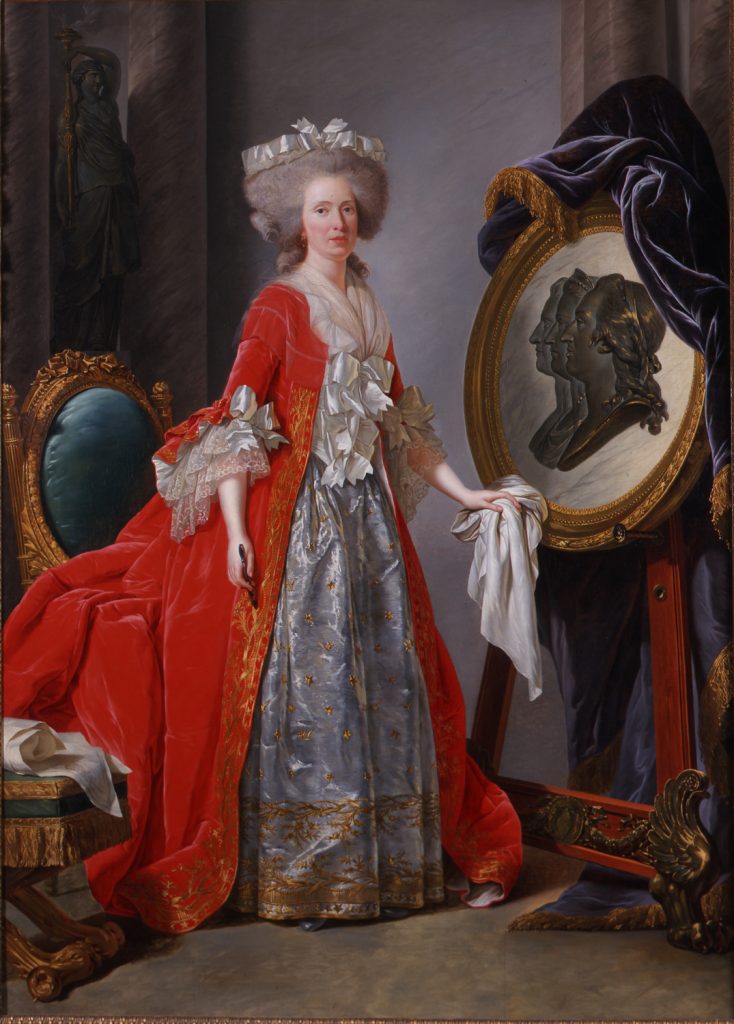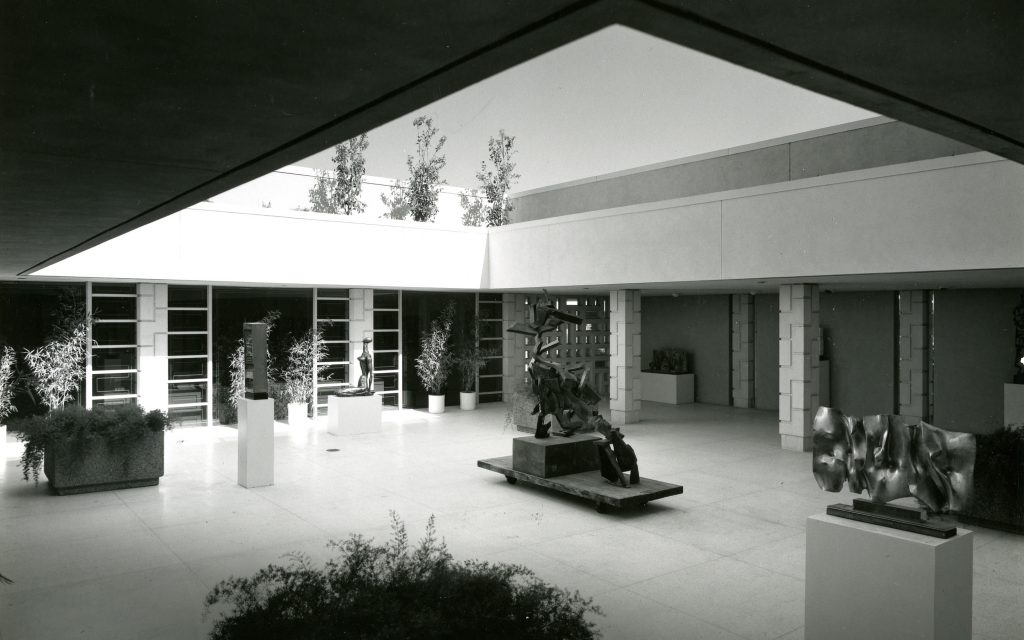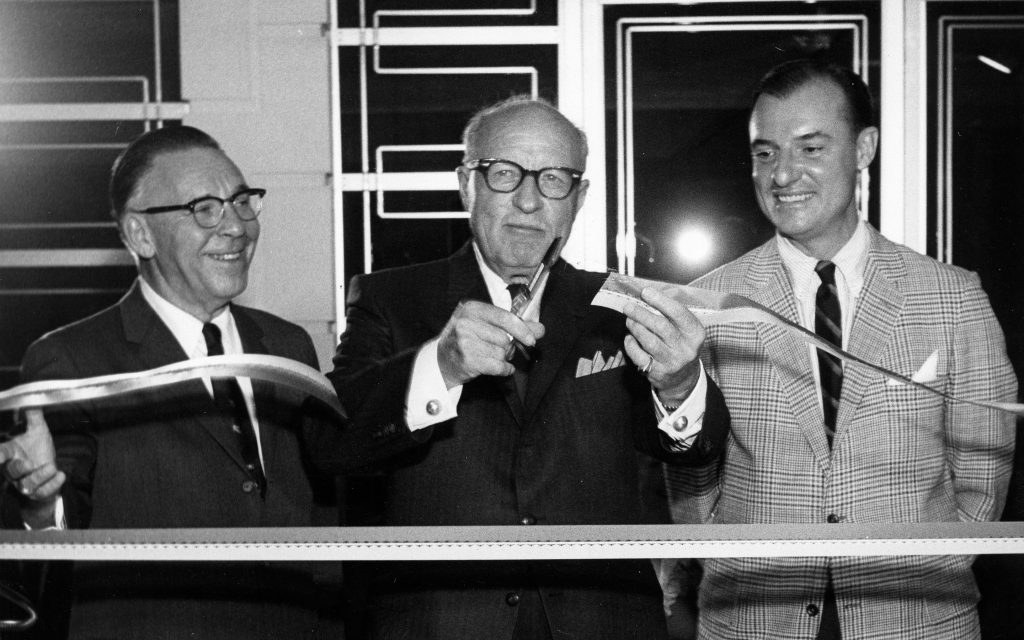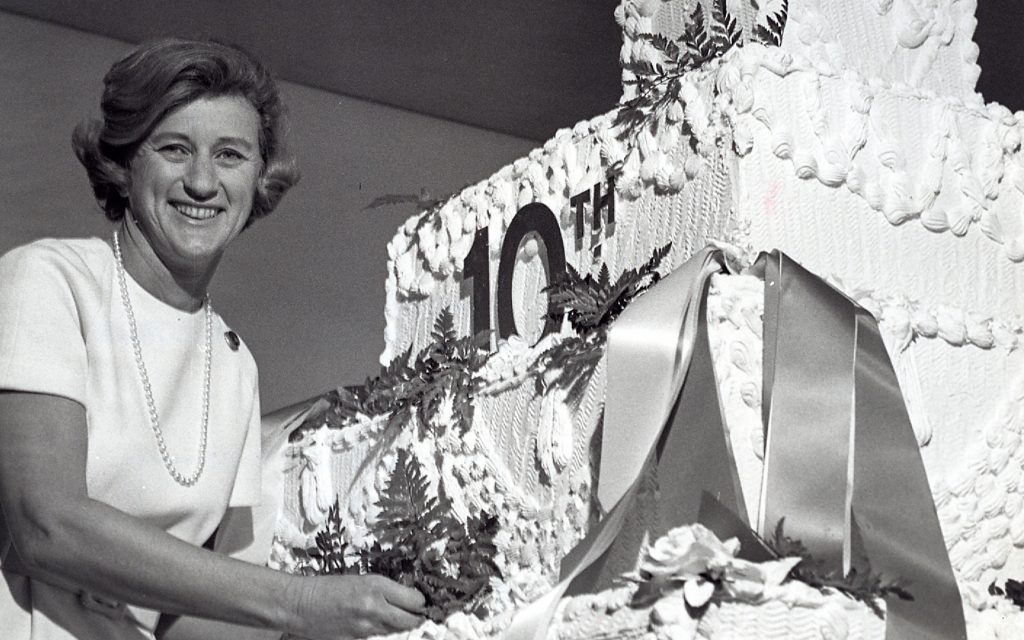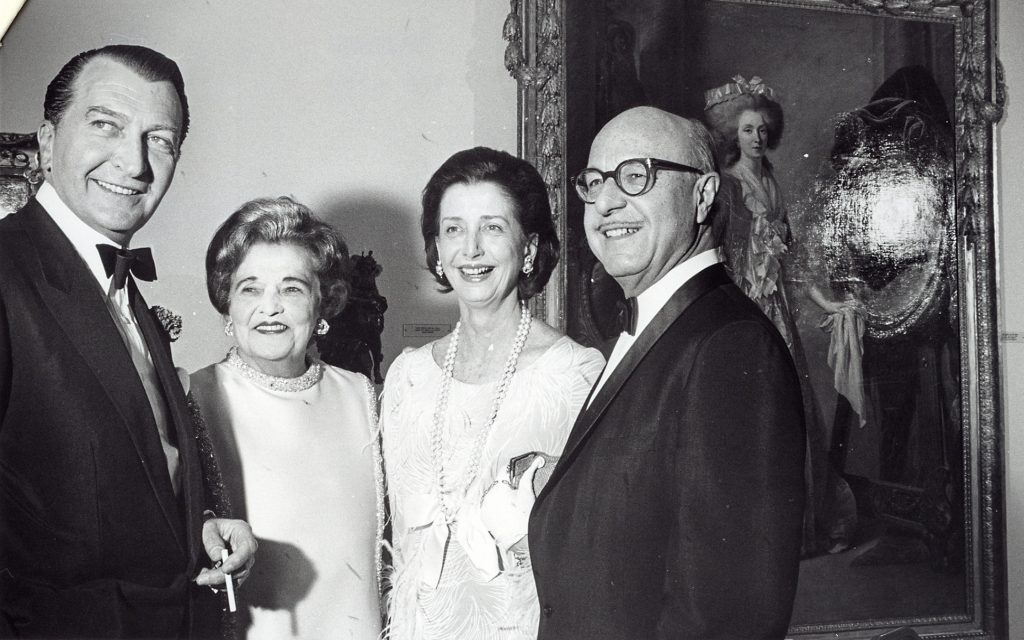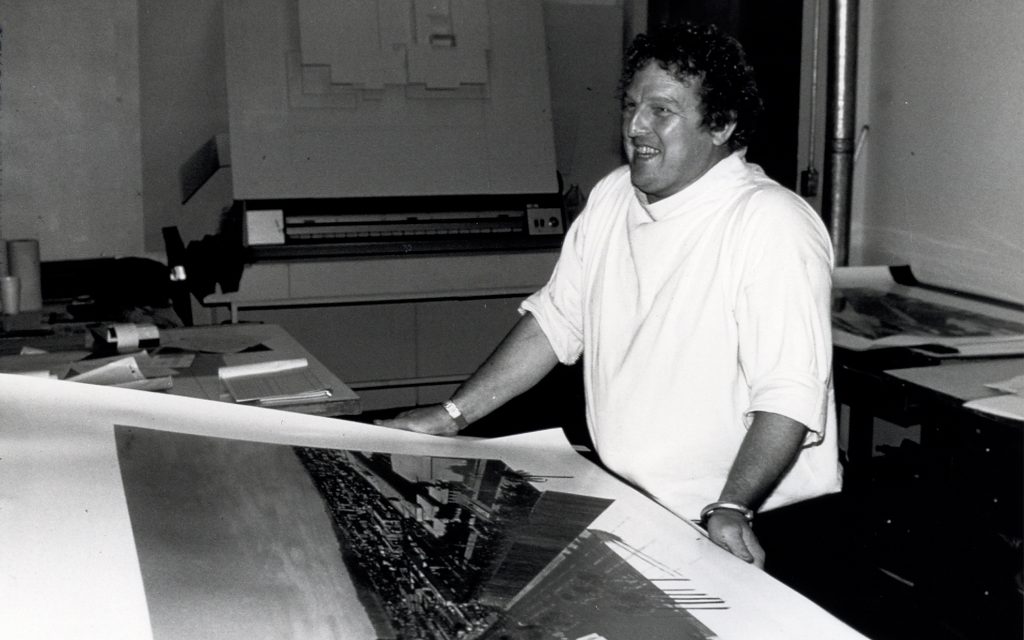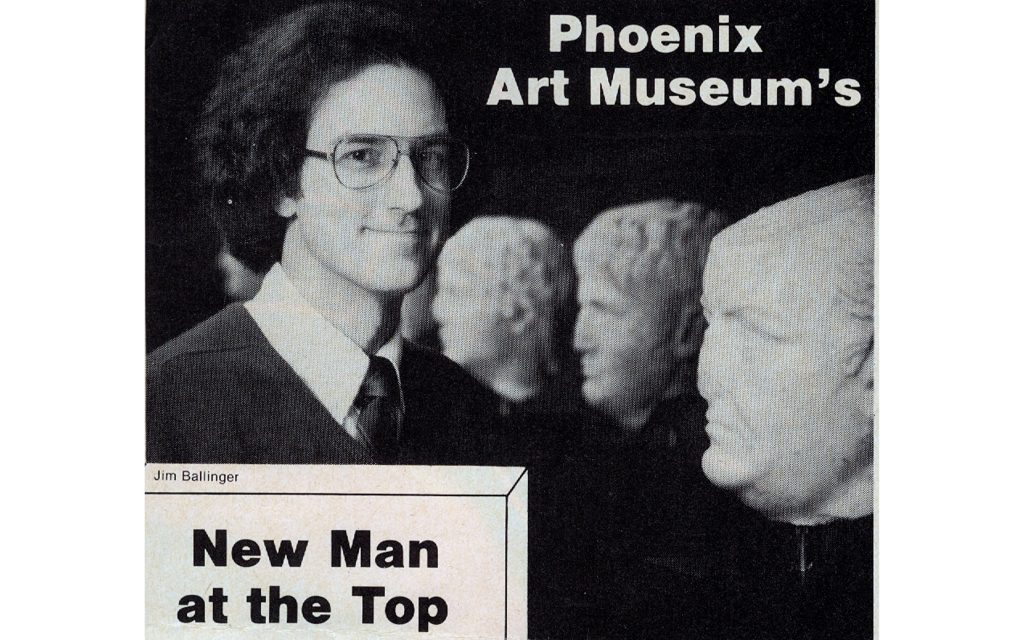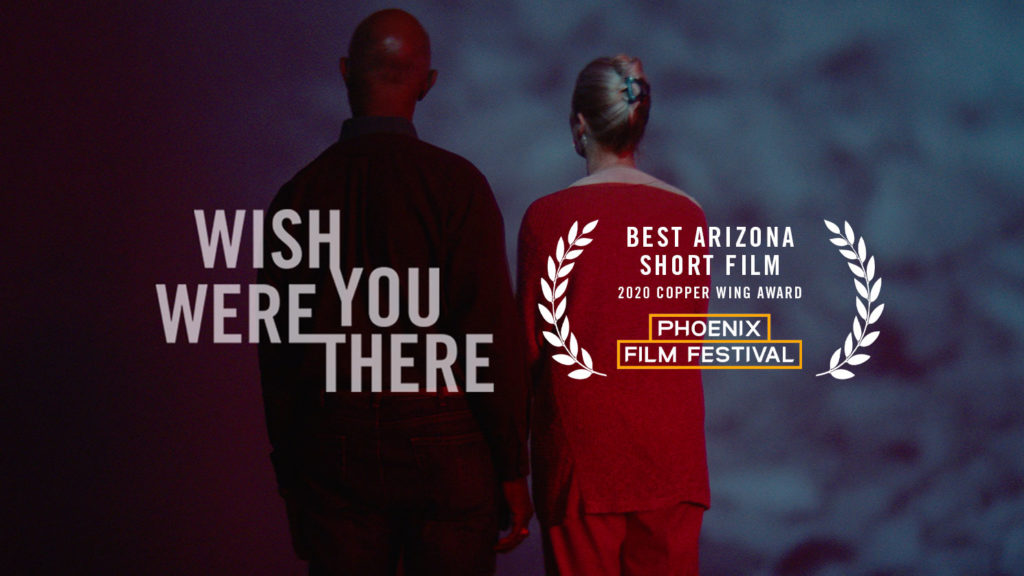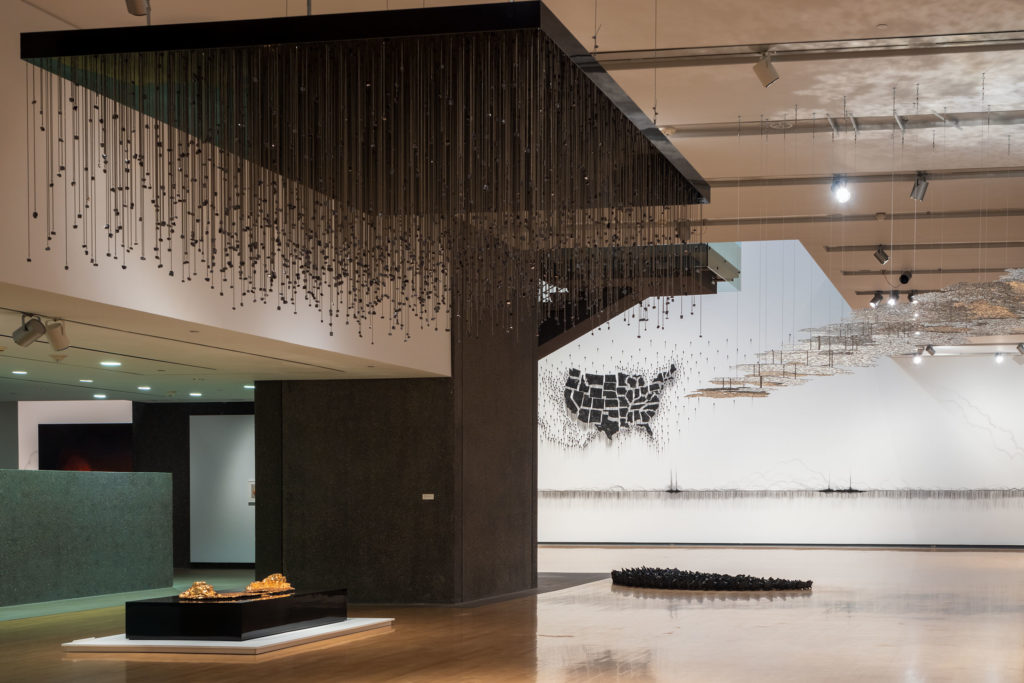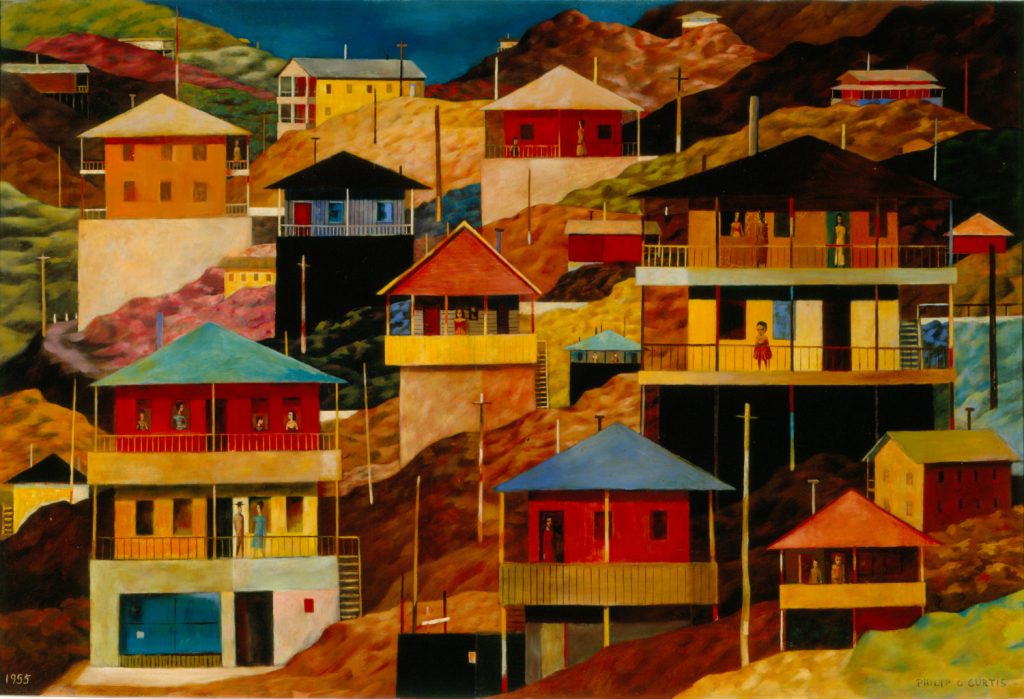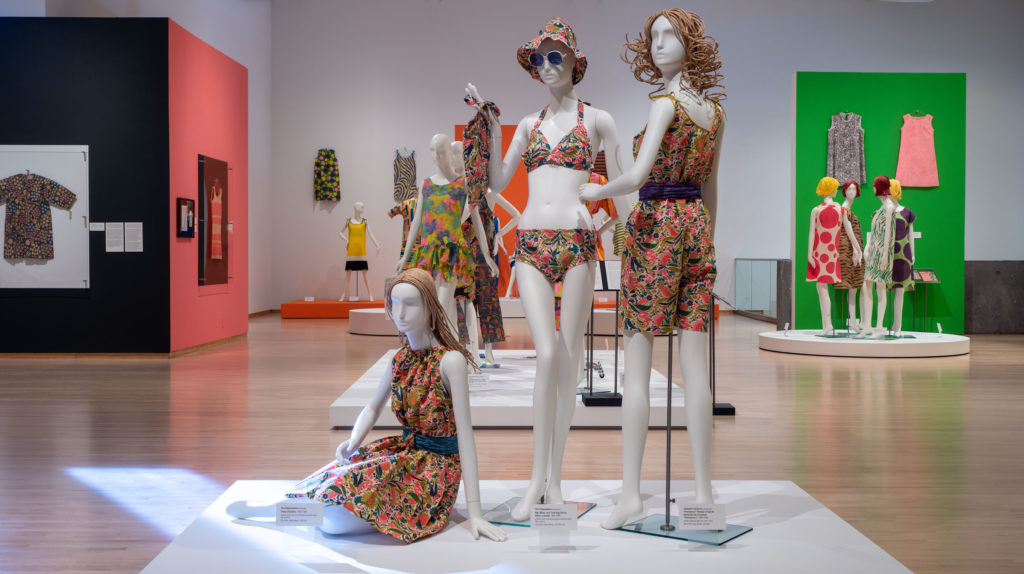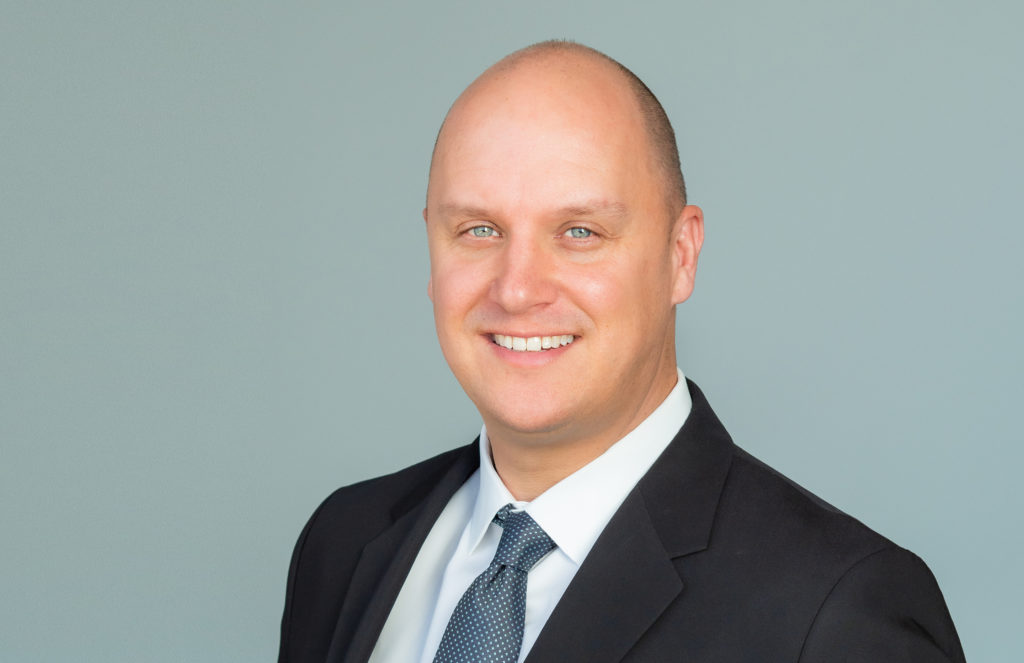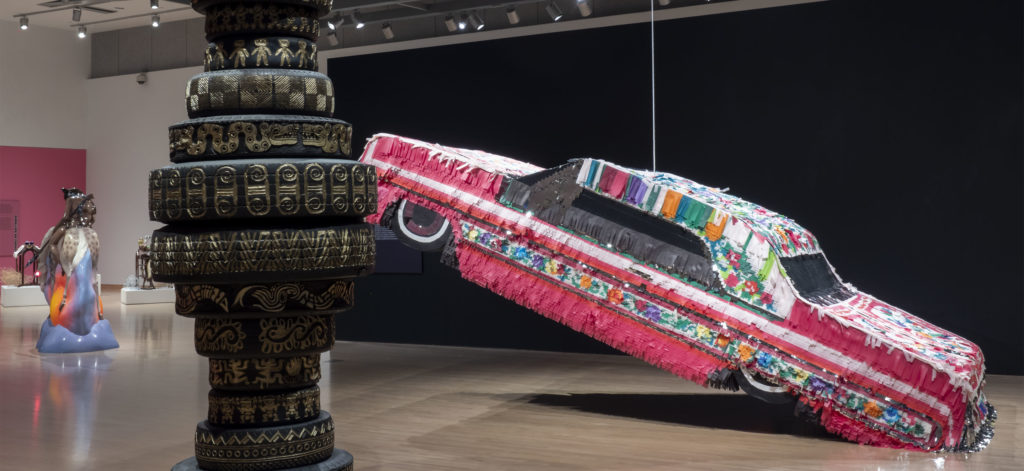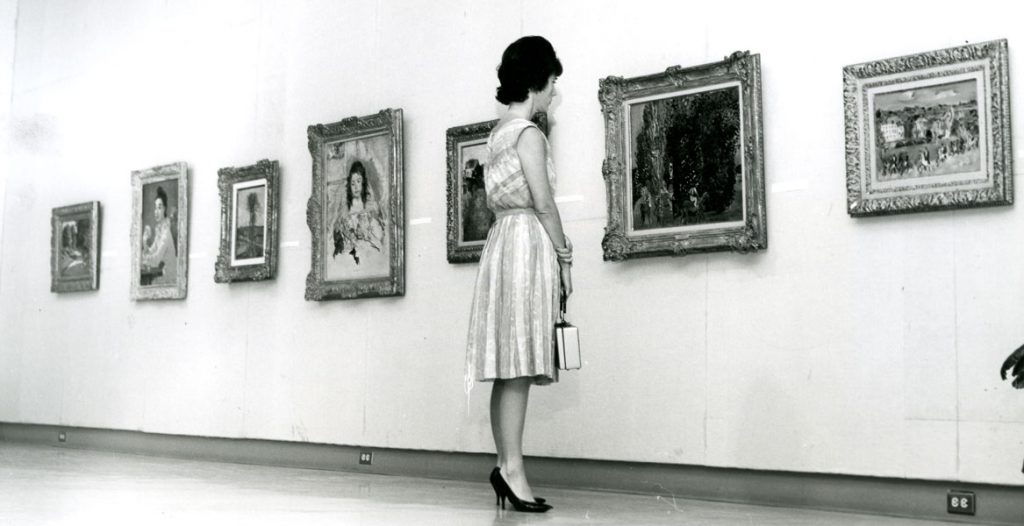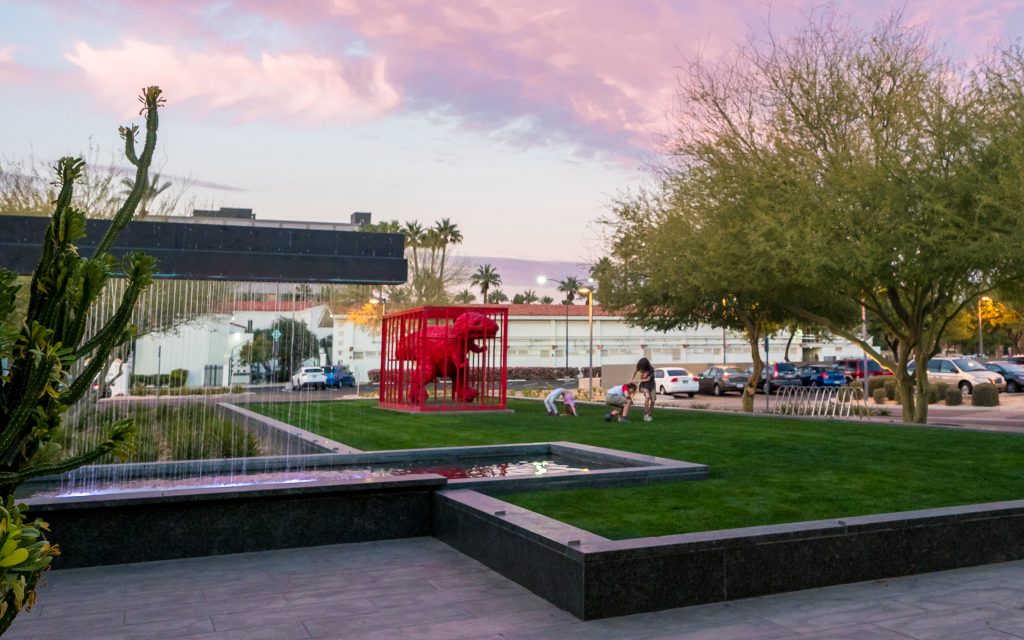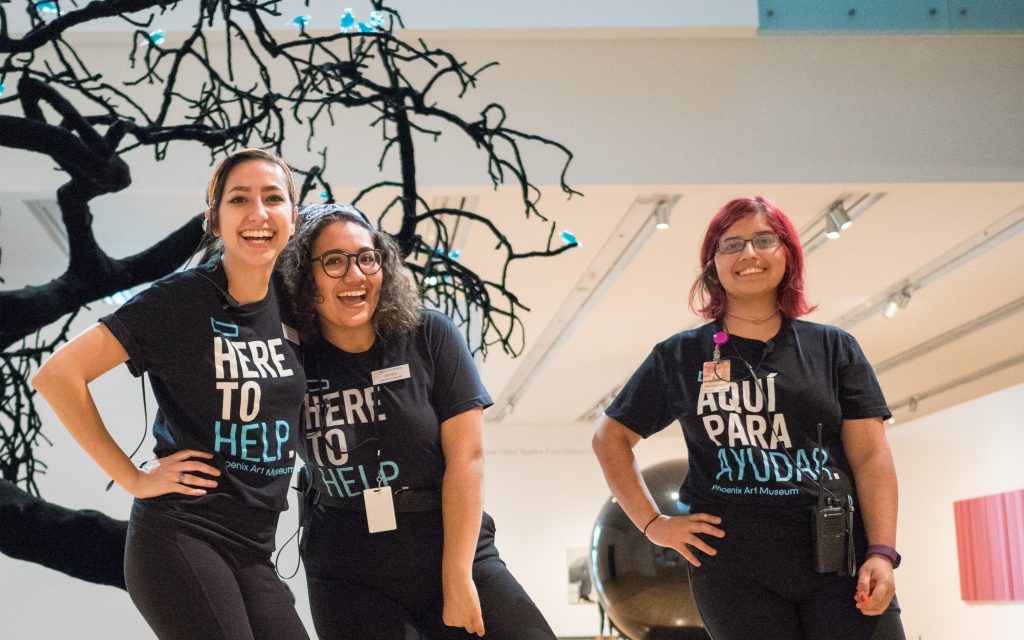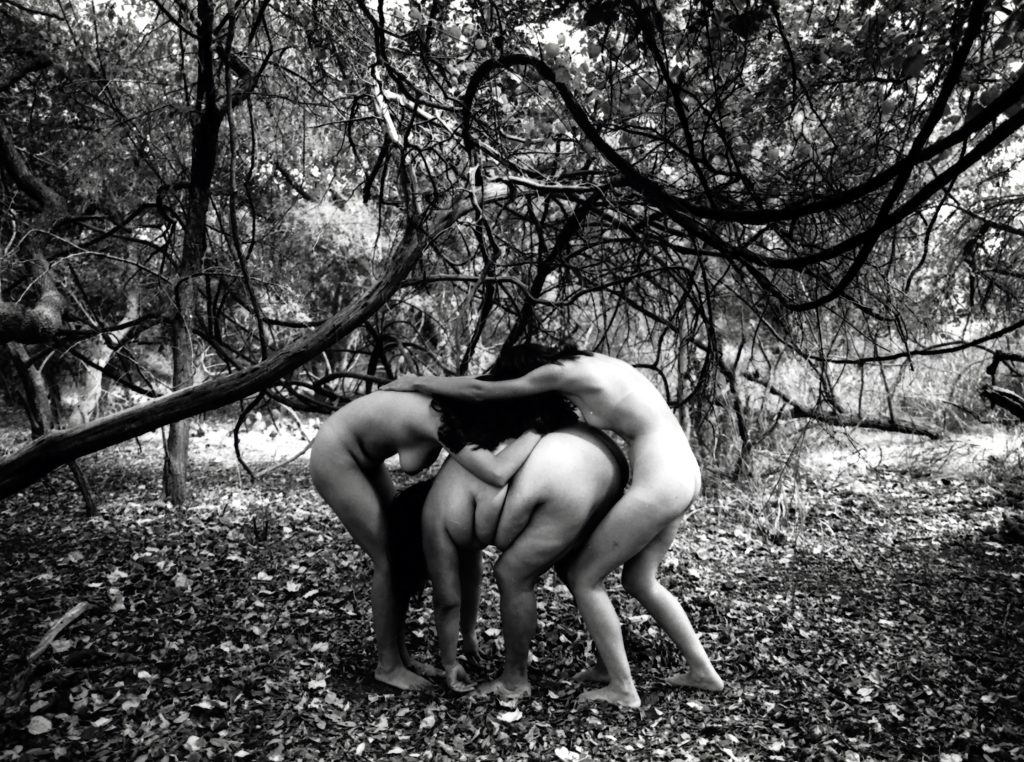BECOME A PHXART MEMBER TO ENJOY UNLIMITED ADMISSION TO THE MUSEUM YOU LOVE, ALL YEAR LONG
The Genesis of a Collection
An Arts Community Begins
An Arts Community Begins
Amidst the Great Depression, Arts and Culture Thrive
Amidst the Great Depression, Arts and Culture Thrive
Amidst the Great Depression, Arts and Culture Thrive
The Community Establishes a Site
The Community Establishes a Site
The Community Establishes a Site
The Community Establishes a Site
The Community Establishes a Site
The Community Establishes a Site
The Museum Comes to Be
The Museum Comes to Be
The Museum Comes to Be
The Museum Comes to Be
The Museum Comes to Be
The Museum Comes to Be
The Museum Comes to Be
The Museum Comes to Be
The Museum Comes to Be
The Museum Expands
The Museum Expands
The Museum Expands
The Museum Expands
The Museum Expands
The Museum Expands
The Museum Expands
The Museum Expands
The Museum Expands
The Museum Expands
The Museum Expands
New Programs and Leadership Set a Course for the Future
New Programs and Leadership Set a Course for the Future
New Programs and Leadership Set a Course for the Future
New Programs and Leadership Set a Course for the Future
New Programs and Leadership Set a Course for the Future
New Programs and Leadership Set a Course for the Future
New Programs and Leadership Set a Course for the Future
New Programs and Leadership Set a Course for the Future
New Programs and Leadership Set a Course for the Future
New Curators, New Directions
New Curators, New Directions
New Curators, New Directions
New Curators, New Directions
New Curators, New Directions
New Curators, New Directions
New Curators, New Directions
The Museum Grows to Create Spaces, Real and Virtual
The Museum Grows to Create Spaces, Real and Virtual
The Museum Grows to Create Spaces, Real and Virtual
The Museum Grows to Create Spaces, Real and Virtual
The Museum Grows to Create Spaces, Real and Virtual
The Museum Grows to Create Spaces, Real and Virtual
The Museum Grows to Create Spaces, Real and Virtual
The Museum Grows to Create Spaces, Real and Virtual
Creating A 21st-Century Museum
Creating A 21st-Century Museum
Creating A 21st-Century Museum
Creating A 21st-Century Museum
Creating A 21st-Century Museum
Creating A 21st-Century Museum
Creating A 21st-Century Museum
Bringing the World to Our Museum, and Our Museum to the World
Bringing the World to Our Museum, and Our Museum to the World
Bringing the World to Our Museum, and Our Museum to the World
Bringing the World to Our Museum, and Our Museum to the World
Bringing the World to Our Museum, and Our Museum to the World
Bringing the World to Our Museum, and Our Museum to the World
Bringing the World to Our Museum, and Our Museum to the World
Bringing the World to Our Museum, and Our Museum to the World
Bringing the World to Our Museum, and Our Museum to the World
Bringing the World to Our Museum, and Our Museum to the World
A Year of Challenge and Change
Expanding the Collection and Access for the Community
New Beginnings
1915-1916
Just three years after Arizona achieves statehood, early civic leaders form the Phoenix Women’s Club. The group’s art exhibition committee seeks to improve the quality of art offerings in the Arizona State Fair and pledges to purchase one work of art each year, the genesis of the Phoenix Municipal Collection that will one day serve as the foundation of the collection of Phoenix Art Museum.
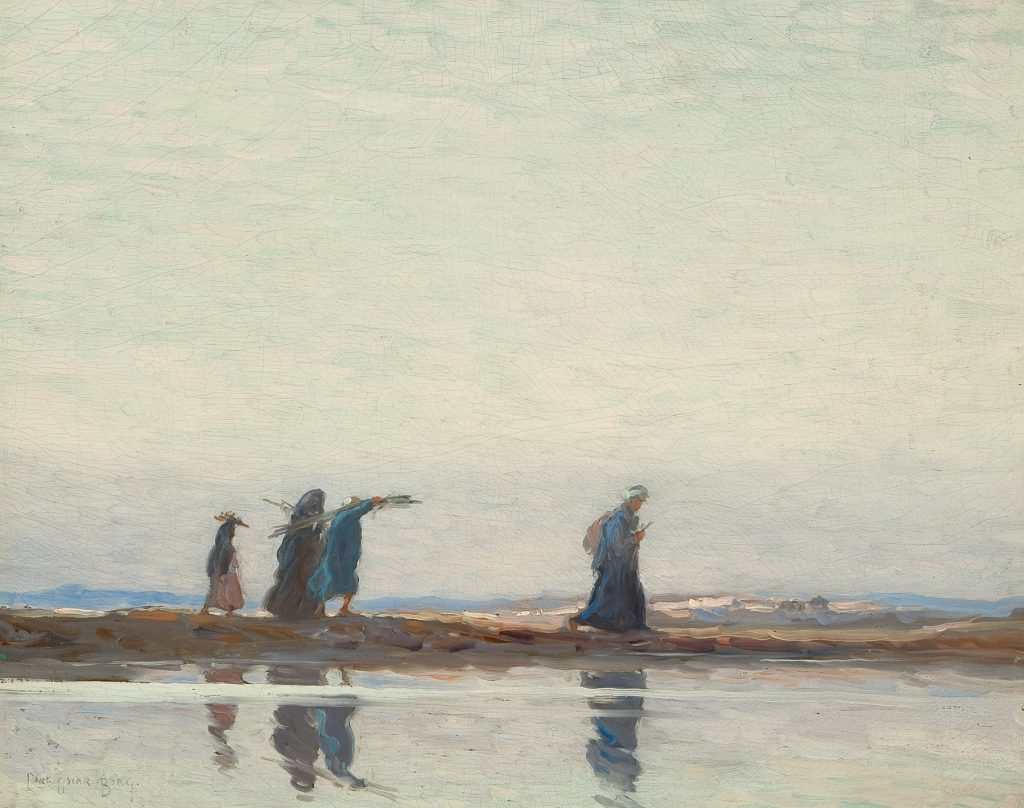
Carl Oscar Borg, Egyptian Evening, c. 1911. Oil on canvas. From the Municipal Art Collection, by exchange.
1925
Community leaders who value the impact of the arts on their burgeoning, young community establish the Phoenix Fine Arts Association, composed of the Collectors Club, the Camera Club, the Fine Arts School, and the State Fair Exhibition Committee.
1926-1930
The Phoenix Fine Arts Association begins to present annual exhibitions at the Arizona Museum.
1931-1935
The Phoenix Fine Arts Association and the Phoenix Women’s Club present exhibitions in a building located at 237 North Central.
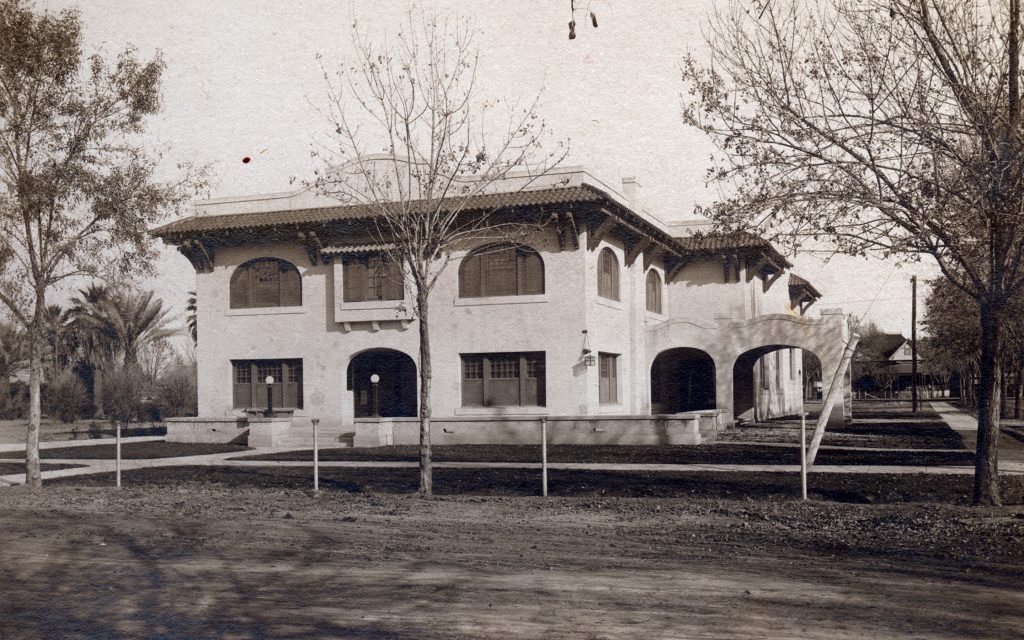
Phoenix Womens Club, 1939.
1936
In response to the severe economic hardships caused by the Great Depression, President Roosevelt establishes the Works Progress Administration (WPA), including a program for the employment of artists, with funding for public art and the establishment of museums and galleries. Roosevelt appoints artist Philip C. Curtis to serve as director of Phoenix Art Center. Artist Lew Davis serves as assistant director and teaches art classes.
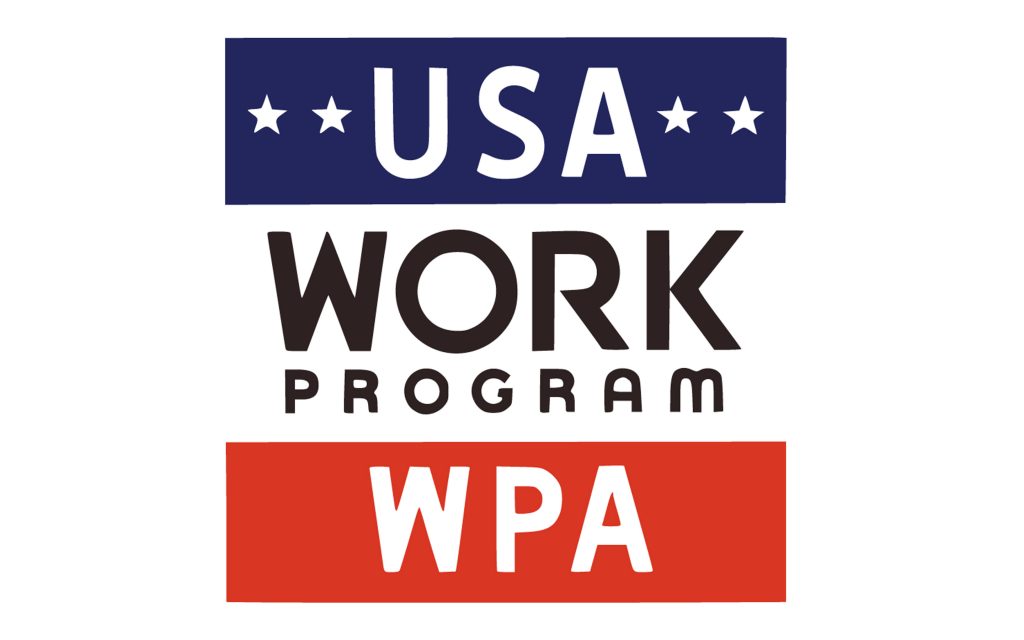
Works Progress Administration, artist unknown - National Archives and Records Administration
1937
After a period of inactivity during the Depression, the Phoenix Fine Arts Association is reorganized as the Arizona Artists Guild, the Charcoal Club, and the Pictorialists, along with the Junior League as associate members. The groups meet at the Heard Museum.
In September, the WPA project in Arizona concludes. Those who spearheaded the program, namely Philip C. Curtis, Lew Davis, Jay Datus, and Reg Manning, continue to encourage the local fine-art movement.
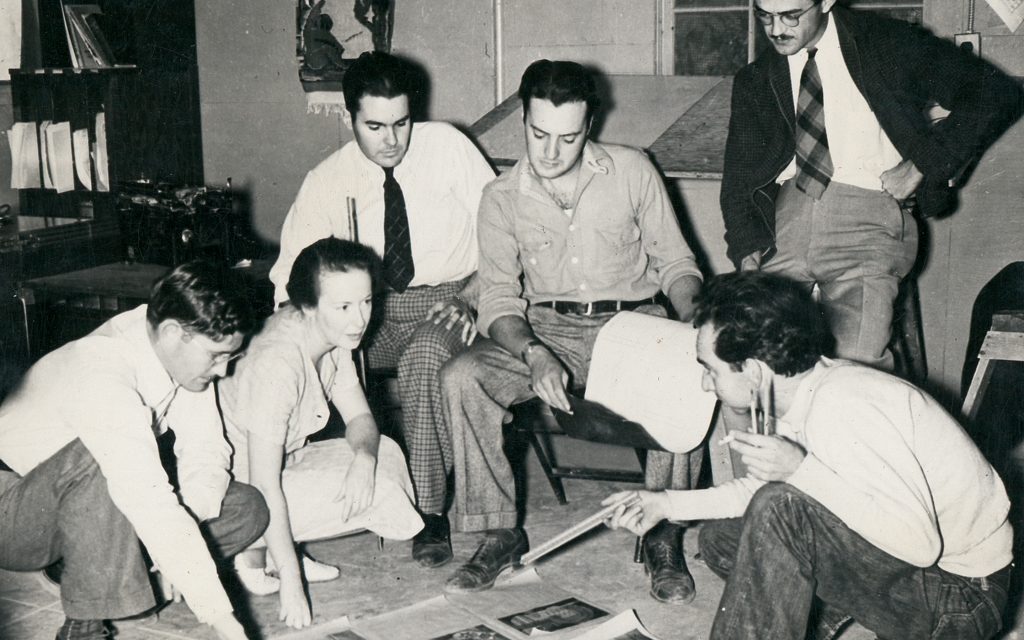
1940
The population of Phoenix grows to 65,400. The heirs of the late Adolphus Clay Bartlett donate 6.5 acres of land for the purpose of constructing a civic center at the northeast corner of Central Avenue and McDowell Road. The planned civic center will include an art museum, library, and theatre. The Civic Center Association is formed to raise funds for the complex and formulate building plans.
1942
With the United States’ involvement in World War II, the Civic Center Association abandons building plans for the foreseeable future, as it partners with Arizona Artists Guild to collect paintings for nearby military installations, some of which are stored in the basement of the Heard Museum.
1945
Two rooms at the Heard Museum are used as exhibition space.
1946
Following the conclusion of the war, community leaders organize a fundraising drive to purchase the three remaining residential lots on Coronado Road, east of Central Avenue, and employ an architect for the resumed building project.
1948
A brick house at 45 East Coronado Road opens as the Civic Center House. Later known as the Art Center, it is utilized for cultural activities, exhibitions, and classes.
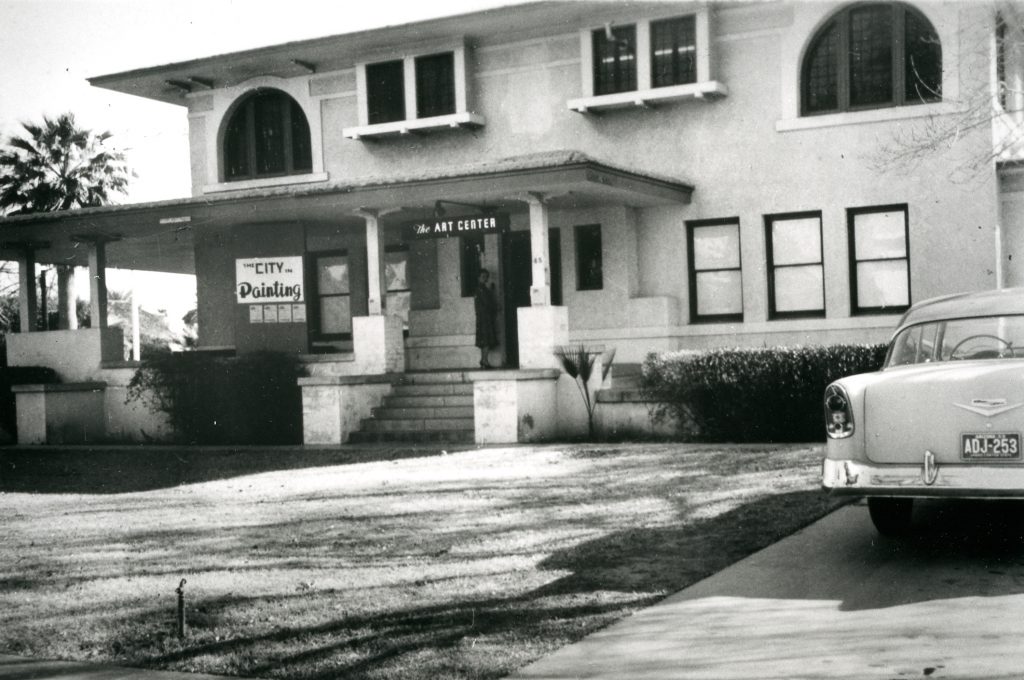
1949
The Phoenix Fine Arts Association was incorporated and acheived tax-exempt status.
1951
The Board of Trustees of the Phoenix Fine Arts Association is reorganized into a 12-member men’s board. A women’s board, the antecedent of the Phoenix Art Museum League, is formed to administer day-to-day operations.
The Art Center names Dorothy Bergamo as its first professional director, hosts 12 exhibitions, and enrolls 140 art students.
1953
The Art Center hosts a weekly television program featuring interviews with local artists, which continues for nearly three years.
1953-1954
The Art Center draws record crowds for two exhibitions of western paintings and the work of architect Frank Lloyd Wright.
1954
The Art Center expands its programs to include tours, lectures, and art advisement for collectors.
1954-1955
The Phoenix Fine Arts Association assumes responsibility for the administration of the 19 East Coronado Gallery and presents two-week exhibitions featuring local artists.
The Fine Arts School expands services and enrolls 326 students.
1955
The Civic Center Association dissolves as the Phoenix Fine Arts Association assumes all planning and fundraising responsibilities for the planned Civic Center. The Association grows the permanent collection of paintings, prints, and books.
1955-1956
As the post-war population swells to a staggering 250,000, civic leaders determine that Phoenix needs a comprehensive art museum to provide greater access to fine art for its community.
1957
Under the guidance of Forest Melick Hinkhouse, PhD, the first director of the Phoenix Arts Association, the collection increases, and Association activities expand to include exhibitions and gallery talks. The newly enlarged and reorganized women’s administration board becomes known as the Phoenix Art Museum League. In honor of the 32nd anniversary of the Phoenix Fine Arts Association, supporters begin a $1 million campaign under the direction of the Board of Trustees. The 19 East Coronado building is razed to make space for construction of the future museum.
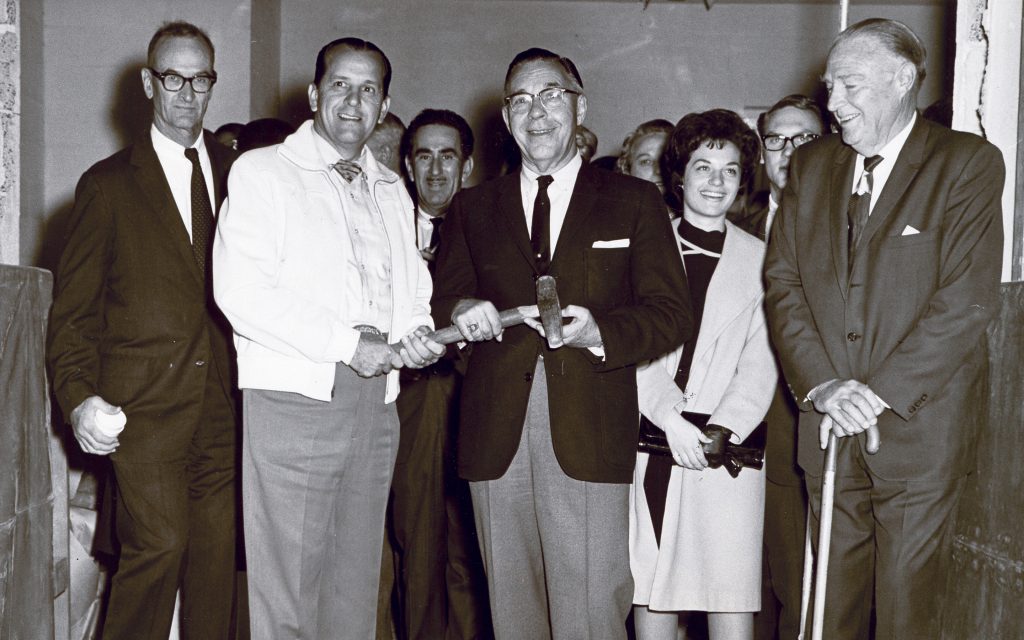
1959
In January, construction begins on a three-story building designed by Michigan architect Alden B. Dow, a student of Frank Lloyd Wright. The Docent Committee of the Art Museum League is established. Hinkhouse, the newly appointed museum director, prepares volunteers to serve as lecturers, museum guides, and front-desk support. On November 18, 1959, Phoenix Art Museum opens with a range of exhibitions featuring late-14th century to contemporary artworks.
1961-1962
Phoenix Art Museum announces construction plans for its east wing, also designed by Dow, which will provide additional space for exhibitions, classrooms, and offices. The expansion is financed through $1.5 million in general obligation bonds approved for the expansion of Phoenix Art Museum and Phoenix Little Theatre; $592,000 in bond funds; and $300,000 in private donations.
1962
The Friends of Art support group is established to grow and augment the collection, build an endowment, and increase public interest in the Museum.
1962-1963
As the city’s population grows to more than 513,000, the Art Center at 45 East Coronado is razed to make way for the new east wing, with a planned completion date of November 1965. More than 170,000 guests visit the Museum.
1964
The Friends of Art provide funds for significant purchases of Asian and American art and facilitate a campaign for works of art by many national donors.
1964-1965
The Museum expands its collection with many significant works. Mr. and Mrs. Donald D. and Sybil Harrington donate many important French Impressionist and Post-Impressionist works, including Claude Monet’s Les arceaux fleuris, Giverny (1913). Resources are provided for the purchase of Adélaïde Labille-Guiard’s Madame Adelaide (c. 1787).
The Museum expands its presentation of Latin American art with the original exhibition Contemporary Mexican Artists, which travels to museums across the United States and Mexico.
1965
On November 18, 1965, the Museum opens its new east wing with gala ceremonies attended by museum directors, art patrons, collectors, and writers from across the United States, Europe, and Latin America. Along with remodel work to the existing building, the expansion triples the Museum’s size to 75,000 square feet and includes the Western and Mexico galleries, the Sculpture Courtyard, the Louis XVI and Spanish Colonial galleries, and the Singer Auditorium. More than 180,000 guests visit the Museum.
1966
Arizona Costume Institute, a Museum support group, is established to raise funds in support of the Museum’s burgeoning fashion design program and the collection of historically significant objects. Men’s Arts Council, a Museum support group, is established to raise funds for exhibitions and educational programs. Its initial support enables the Museum to begin to open on Wednesday evenings.
1966-1967
The Museum opens the Helen Wells Decorative Arts Gallery and a Museum gift shop. After guiding the Museum through nearly a decade of expansive growth, Hinkhouse retires as director of Phoenix Art Museum. R. Donne Puckle is appointed acting director.
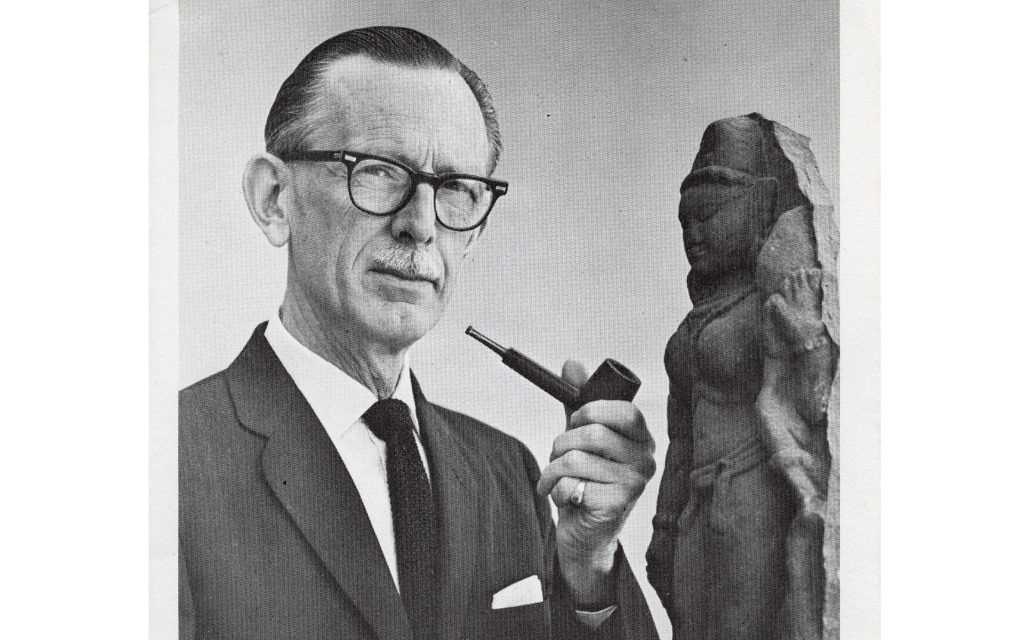
R. Donne Puckle. Phoenix Art Museum Archive, 1968.
1967-1968
Hugh T. Broadley is appointed as director of Phoenix Art Museum.
The Museum begins to offer courses and seminars in art history in partnership with Arizona State University.
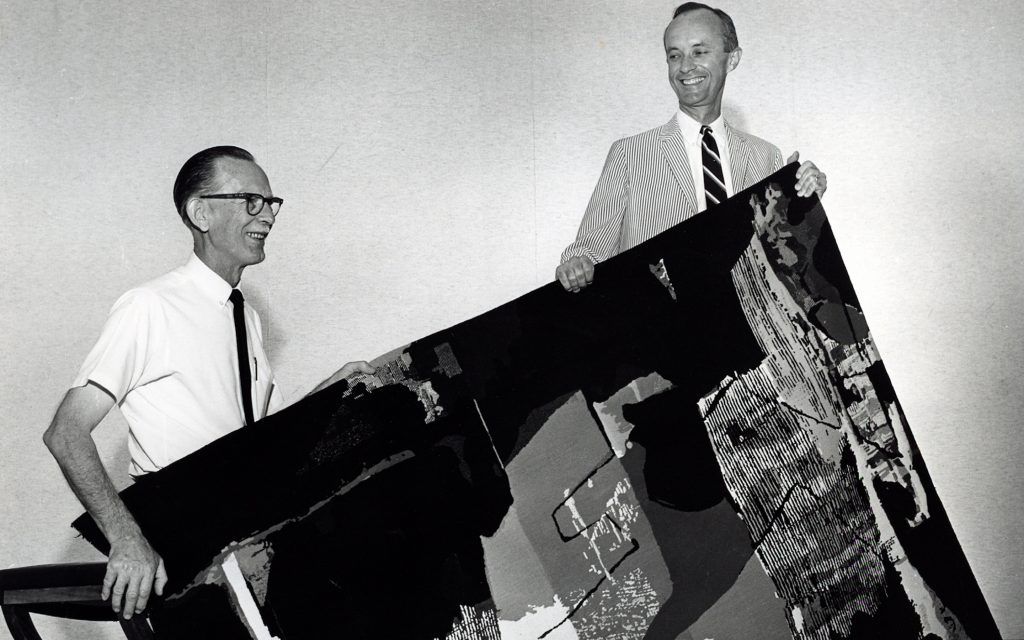
R. Donne Puckle and Hugh T. Broadly. Phoenix Art Museum Archive, 1967.
1968
Western Art Associates, a Museum support group, is established to raise funds and grow the collection of Western American art.
1969
The Museum relocates its library to a basement location near Singer Auditorium, enabling the Museum Store to double its size. The Museum celebrates its 10th anniversary under the leadership of new museum director Goldthwaite Higginson Dorr III. A new, full-color film showcasing Phoenix Art Museum and entitled A Thousand Worlds to Discover is created and shown on local television station KTAR.
1970
Museum Docents donate 17,496 hours of service, the equivalent of eight full-time staff positions.
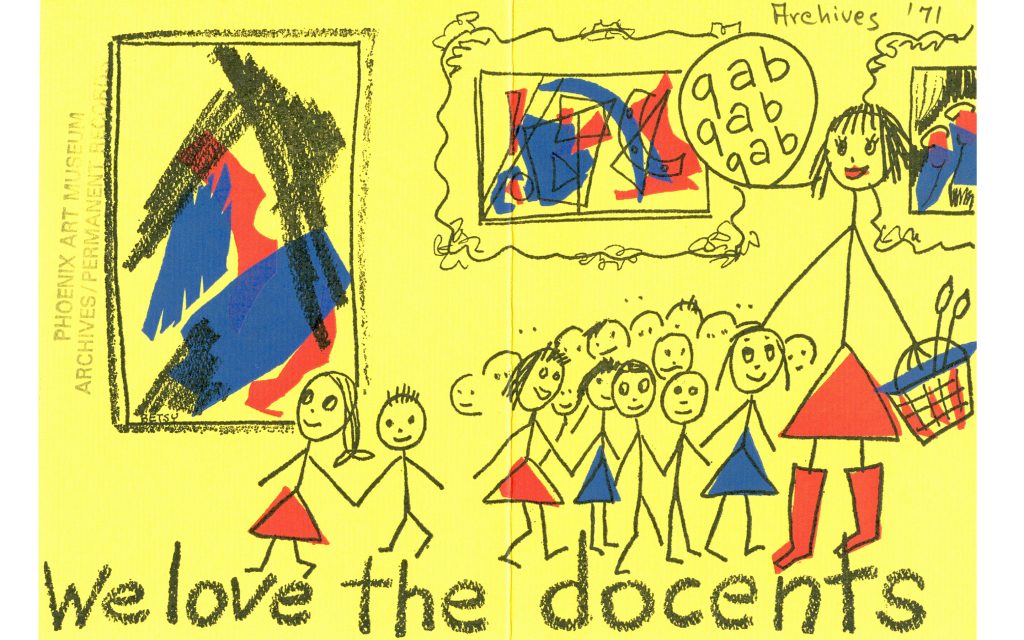
1971
The Museum establishes the Phoenix Biennial, a juried, invitational exhibition featuring artists from Colorado, New Mexico, Utah, and Arizona.
1972
The Museum, with the support of its Docents, establishes the Art All Around Us program, providing educational, art historical outreach to elder-care centers across the city.
1973
The Museum partners with Cowboy Artists of America to present the first of many annual exhibitions and sales of contemporary Western American art.
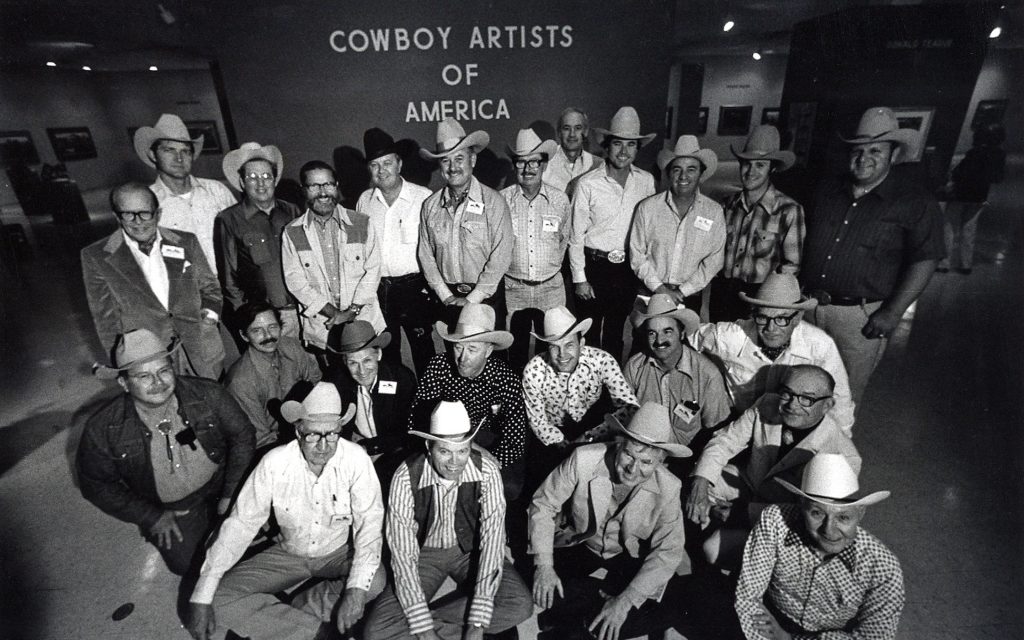
1973-1974
Robert H. Frankel serves as the Museum’s acting director.
1974
Ronald Hickman is appointed Museum director.
1974-1975
The Museum receives a grant from the National Endowment for the Arts to establish a satellite campus in Sun City.
1977-1978
With the goal of increasing funding for arts and culture in Arizona, the Museum develops and hosts a statewide conference concerning business and corporate support for the arts.
1979
The Museum celebrates its 20th anniversary with an exponential increase in Museum attendance, as well as the publication of an award-winning catalogue, Beyond the Endless River, authored by curator James K. Ballinger.
The Museum establishes Corporate Sundays, with free admission for employees of corporate organizations who have provided financial support for the Museum.
1980-1981
After several successful years of service to the far northwest senior community, the Sun City branch of Phoenix Art Museum closes in anticipation of the formation of an independent Sun City Art Museum.
1982
Contemporary Forum, a Museum support group, is established to sponsor exhibitions and seminars on modern and contemporary art and help the Museum with its contemporary art acquisitions.
The Phoenix Project, an exhibition by artist Dale Eldred that involves several monumental outdoor pieces, is installed in the Museum and throughout Phoenix with the cooperation of many local businesses and individuals.
James K. Ballinger is appointed Museum director.
1982-1983
The Museum embarks on its first membership drive, “The Dynamic Phoenix Art Museum,” and its membership households number 4,700. The Museum adds new curatorial positions, including curator of 20th Century art and curator of education.
1983-1984
The Museum remodels its entrance on Central Avenue and Singer Auditorium.
1984-1985
The Board of Trustees commissions a feasibility and design-program study for the expansion and renovation of the facility.
1985
Asian Arts Council, a Museum support group, is established to support the growth of the Asian art collection, exhibitions, and related educational programs.
1987-1988
Based on the recommendations of the feasibility and design-program study, the Museum submits a bond project proposal to the City of Phoenix. The Museum is awarded a $400,000 endowment challenge grant by the National Endowment for the Arts, with the Museum successfully meeting the three-to-one challenge. Positive publicity about the Museum’s achievements help spur a successful City of Phoenix bond election in 1988, resulting in $20 million for the expansion.
1990
Annual museum attendance reaches more than 210,000, with an additional 40,000 served through offsite outreach.
1993-1996
As the population of the metro area reaches 2.5 million, the Museum embarks on the Endowment and Building campaign, including $25 million for expansion and $15 million for the Museum’s endowment.
1994
Construction begins on the expansion and renovation of the Museum, spearheaded by architects Tod Williams / Billie Tsien & Associates, based in New York. The Museum remains open during the expansion, although its offices are temporarily relocated to Park Central Mall.
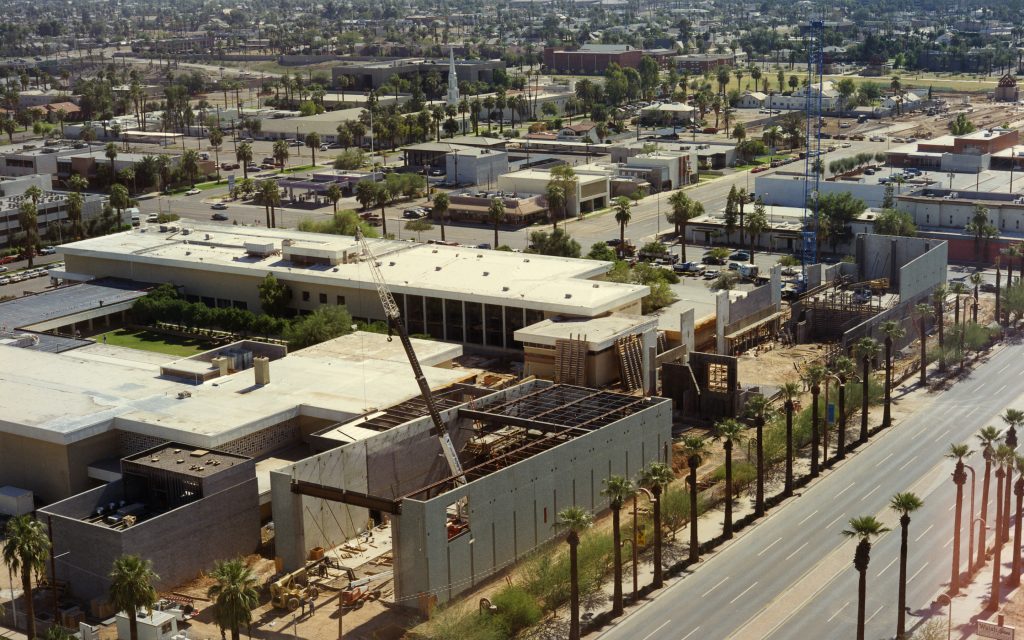
1996
In September, the Museum celebrates the grand opening of the expanded and renovated building, which has doubled in size to more than 160,000 square feet and includes new galleries for the 13,000-object collection and international traveling exhibitions; additional art storage space; Whiteman Hall, a 300-seat public theater; the new Lemon Art Research Library; studio classroom facilities; the interactive ArtWorks Gallery for children; Art Museum Café; Singer Orientation Theater; and other visitor amenities. The new facilities are featured in numerous national and international architectural publications.
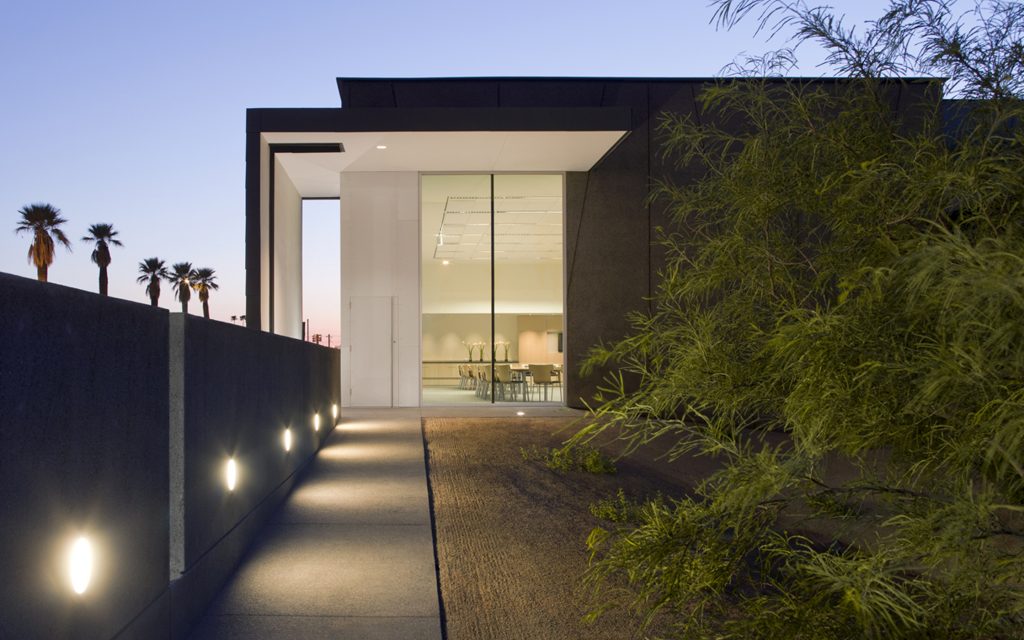
1997
More than 220,000 guests visit the Museum. The Museum entry plaza is renovated, adding a new water feature, trees, and enhanced seating areas. The Museum hosts royal visits by both HRH Princess Anne and HRH Princess Alexandra during their visits to Arizona as part of the UK/AZ Festival.
1998
The Museum launches its new website, phxart.org, and introduces a new CD audio guide to its collection.
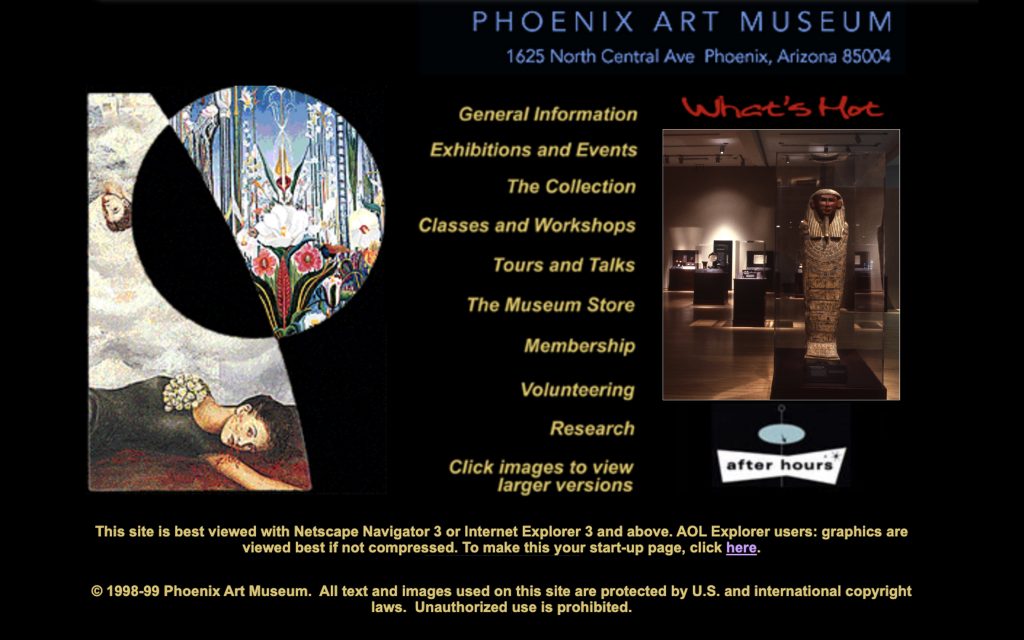
1998-1999
Phoenix Art Museum presents the single most visited exhibition in its history, Splendors of Ancient Egypt, which draws crowds of more than 300,000 and expands the Museum’s membership households to 14,000. The Museum also presents an original exhibition entitled Copper as Canvas: Two Centuries of Masterpiece Paintings on Copper, 1575-1775, the first major exhibition of its kind in the world.
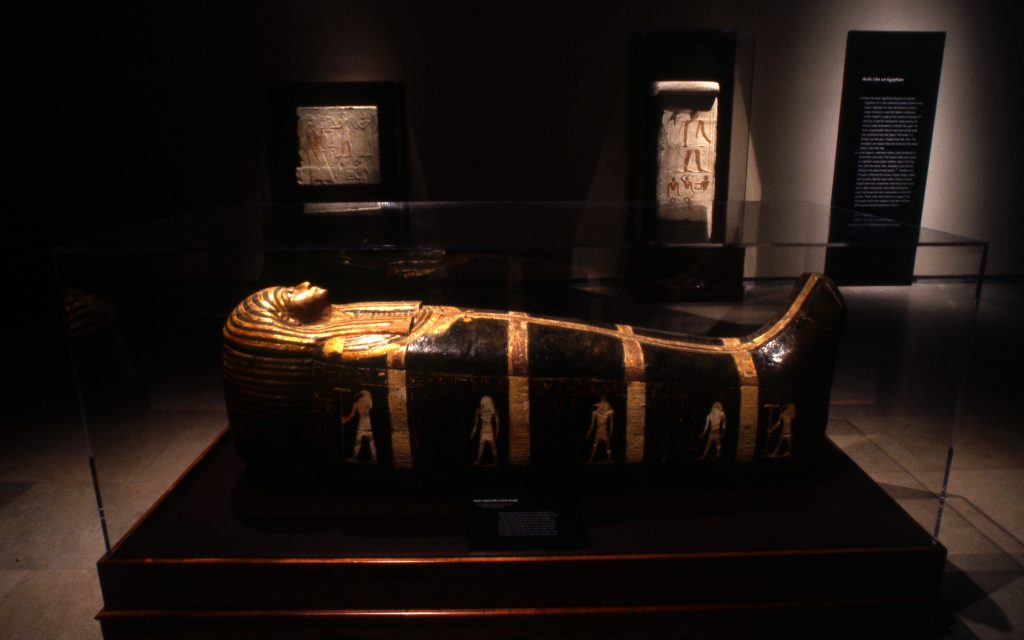
1999
In August, the Museum receives a $1 million endowment from the Marshall Fund of Arizona, a non-profit charitable foundation, which will enable the Museum to organize and present exhibitions each year featuring work by under-recognized living American artists in the Jonathan and Maxine Marshall Gallery of Contemporary Art.
The Museum celebrates its 40th anniversary with the opening of its second blockbuster exhibition in its history, Monet at Giverny: Masterpieces from the Musée Marmottan, which draws more than 300,000 visitors and expands Museum membership households to 27,000.
Latin American Art Alliance, a Museum support group, is established to build awareness of Latin American art and raise funds in support of related exhibitions and acquisitions.
2000
The Museum acquires a selection of Vietnamese blue and white porcelain pieces from the Hoi An Hoard. The 15th-16th century works had been recovered from a sunken ship that had rested off the Vietnamese coast for 500 years.
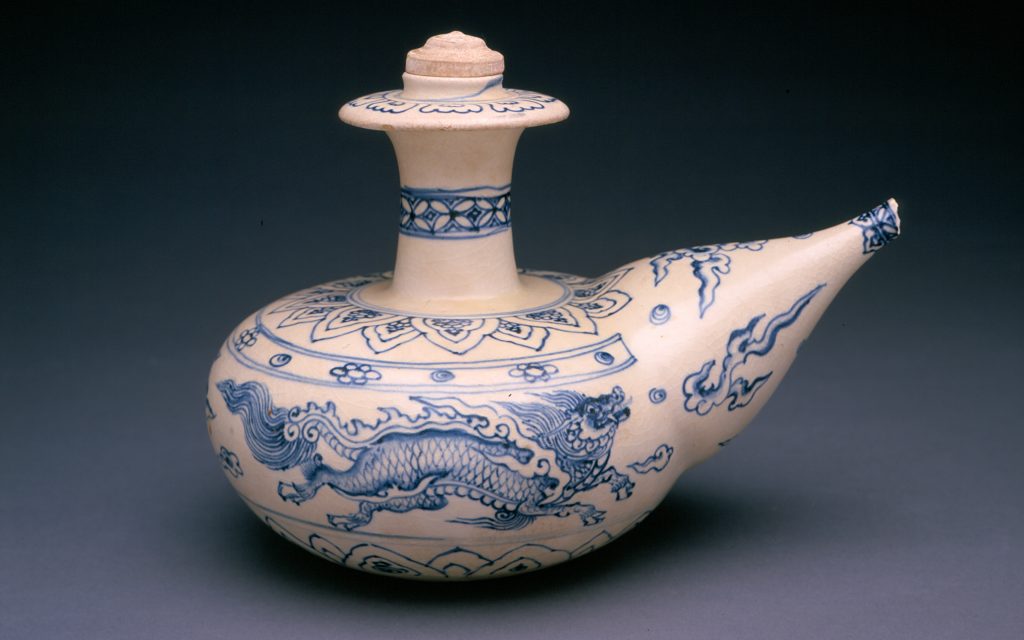
Unknown, Blue and white jar (Jarra azul y blanco), 15th-16th century. Porcelain. Museum purchase.
2001
In March, the City of Phoenix bond election sees the overwhelming passage of all 12 bond issues on the ballot. Proposition 6, the bond issue which includes funds for Phoenix Art Museum and many other cultural and educational institutions, passes with more than 70% of the vote. As a result, Phoenix Art Museum receives $18.2 million to complete its master plan, which began as a result of the prior bond election in 1988.
The Ullman Gallery, featuring the art of Philip C. Curtis and made possible through a generous gift from Virginia Ullman, opens to the public on April 24.
During the run of the exhibition Frida Kahlo, Diego Rivera and Twentieth-Century Mexican Art: The Jacques and Natasha Gelman Collection, Phoenix Art Museum is chosen by the United States Postal Service as the location for the launch ceremonies for a new Frida Kahlo postage stamp.
For the first time, Phoenix Triennial 2001 (July 28-September 23) features works from Mexico, as well as Arizona, California, New Mexico, and Texas.
For the first time in its history, the Museum creates Spanish-language audio tours to increase audience accessibility for family programs.
2002
The Museum’s collection expanded to a record 17,000 objects.
2004
The Museum embarks on Shaping the Future through Art, a $15 million capital and endowment campaign designed to supplement the $18.2 million voter-approved bond funds. The Museum receives a generous pacesetter gift from the Dorrance Family Foundation for the creation of the Dorrance Sculpture Garden, an outdoor sculpture courtyard not previously included in the master plan. The capital and endowment campaign fundraising goal is increased to $23 million, bringing the total project goal to $41.2 million, which includes $10 million for the Museum’s endowment.
2005
The Museum is awarded the prestigious Kresge Foundation challenge grant for $900,000.
The highlights of the Museum’s exhibition season are In Monet’s Light: Theodore Robinson at Giverny and the critically acclaimed Surrealism USA, for which Phoenix Art Museum is the only other venue, in addition to the exhibition’s organizing institution in New York, the National Academy Museum.
The Museum begins construction on a building expansion as a result of the 2001 Phoenix bond election.
2006
The Museum celebrates the completion and grand opening of its $41.2 million expansion, which includes a dramatic new entrance featuring an entry plaza; dedicated arrival drive with increased visibility on Central Avenue; improved visitor parking; the 12,500-square-foot indoor/outdoor Greenbaum Lobby with a canopy and convenient drop-off area; enhanced amenities and a gathering space for special events; a new four-level gallery wing known as the Ellen and Howard C. Katz Wing for Modern Art, with more than 25,000 square feet of gallery space to house a growing collection of contemporary art and flexible exhibition space; an expanded Museum Store; and an approximately 40,000-square-foot Dorrance Sculpture Garden that serves as an urban oasis for visitors. The new gallery wing and lobby are designed by Tod Williams / Billie Tsien & Associates, New York; the sculpture courtyard is designed by the landscape architecture firm Reed Hilderbrand Associates of Watertown, Massachusetts; and the new entry plaza’s natural spaces are designed by the firm of local landscape architect Christine Ten Eyck. The builder is Kitchell Contractors.
Phoenix Art Museum and the Center for Creative Photography, located at the University of Arizona in Tucson, establish a partnership to provide access to the Center’s comprehensive collections for Phoenix residents. The partnership includes three annual exhibitions of photographic works and a curatorial role, the Norton Family Assistant Curator of Photography, shared between the two institutions.
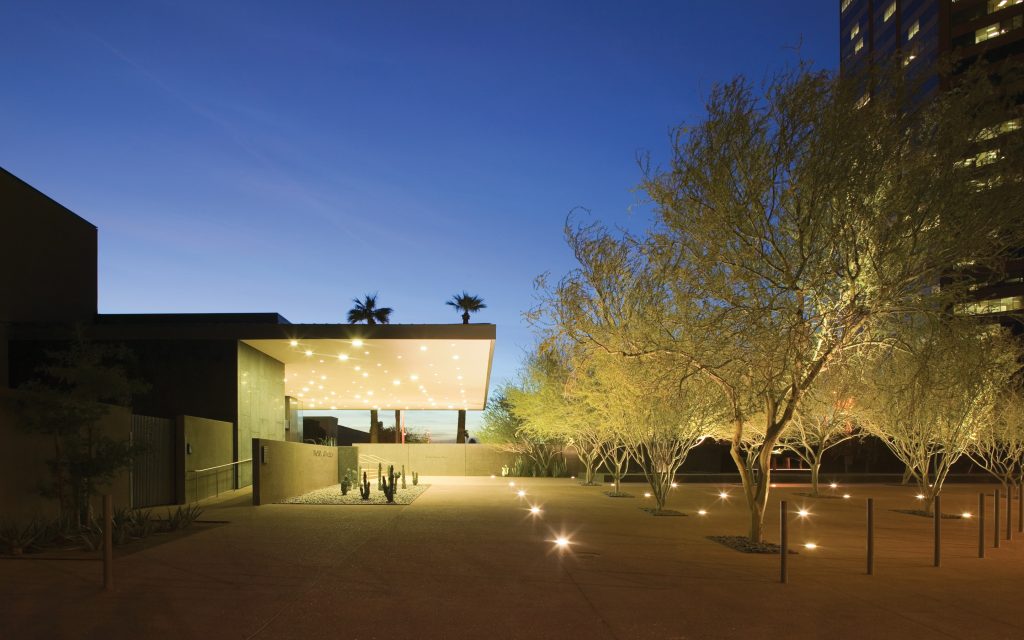
2009
The Museum celebrates its 50th anniversary with a campaign for art known as 50 Works for 50 Years.
2010
The Museum and the Center for Creative Photography present Ansel Adams: Discoveries, an expansive exhibition of works by the eponymous artist, whose collected works are held in the Center’s collections. The exhibition features more than 120 works and archival documents from the artist’s life.
The Museum presents Cézanne and American Modernism, the largest presentation of works by the French Post-Impressionist in Arizona history. The exhibition is among the first to examine Cezanne’s influence on American artists and is enriched by works by Marsden Hartley, Alfred Stieglitz, and Man Ray.
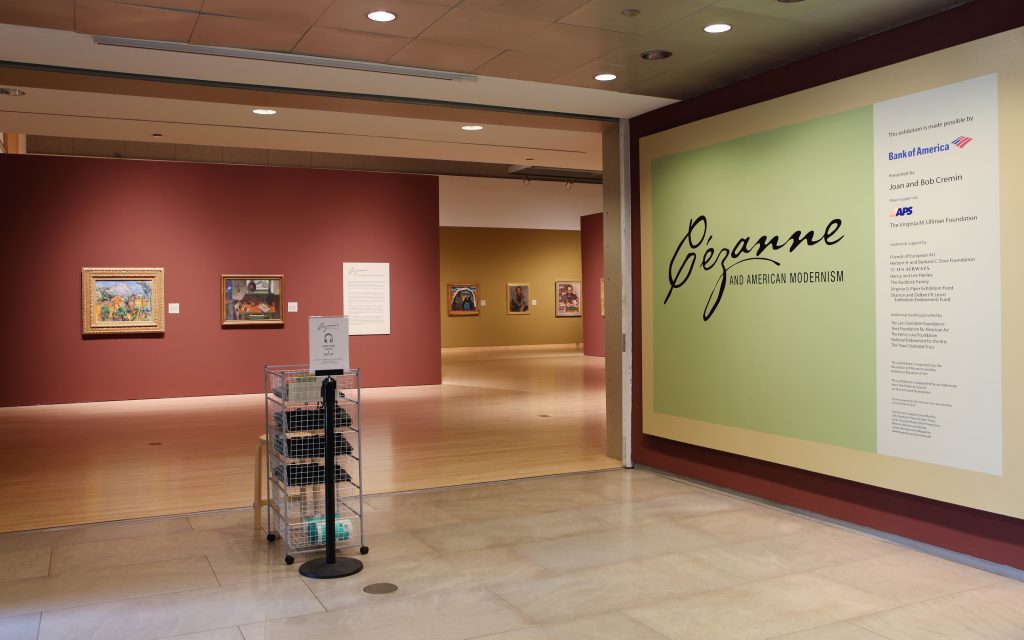
2011
Fashion Design Curator Dennita Sewell curates Giorgio Di Sant’ Angelo, the first major museum retrospective of the American designer. Featuring more than 40 ensembles, the exhibition illuminates the late designer’s career from the 1960s until his death in 1989.
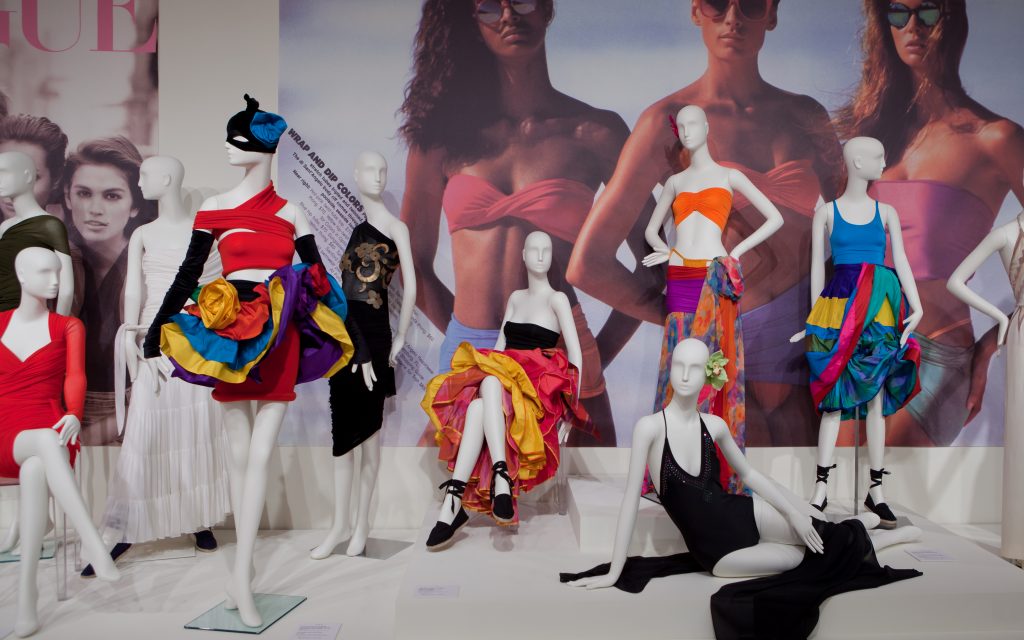
Giorgio Di Sant’ Angelo. Installation view. Phoenix Art Museum, 2011.
2013
Phoenix Art Museum presents the internationally acclaimed collection of Diane and Bruce Halle in Order, Chaos, and the Space Between, which includes the first installation at the Museum of Carlos Amorales’ immersive installation Black Cloud, featuring more than 30,000 black paper moths.
Phoenix Art Museum is selected by artist Kehinde Wiley as the world-premiering institution for his Memling series. The works are a departure from the large-scale paintings that are the hallmarks of the artist’s aesthetic. The new series features small, intimate portraits inspired by 15th-century Flemish master Hans Memling.
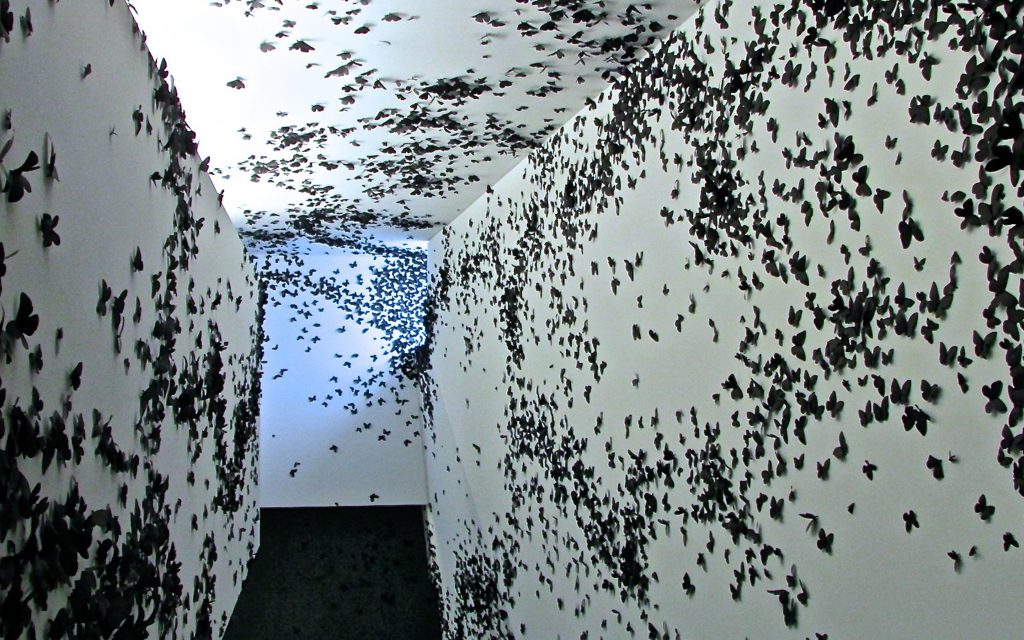
Carlos Amorales, Black Cloud, 2007. Paper. Collection of Diane and Bruce Halle.
2014
The Museum is selected as the only West Coast venue for Hollywood Costume, an exhibition of some of the most iconic costumes in film history, organized by the V&A in London in collaboration with legendary costume designer Deborah Landis (Raiders of the Lost Ark, Coming to America).
2015
After more than 40 years of service to the Museum, James K. Ballinger retires. Amada Cruz is named the Sybil Harrington Director and CEO of the Museum.
The Museum receives a $2.5 million gift from Suzanne and Bud Selig to create and endow the position of the Selig Family Chief Curator. Gilbert Vicario is appointed to the role.
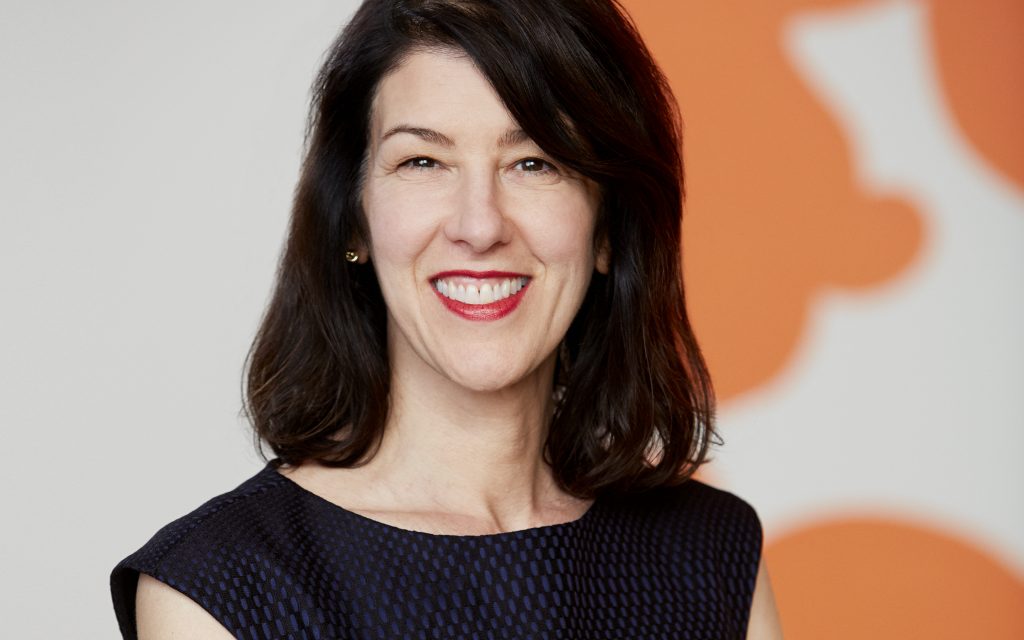
Amada Cruz
2015-2019
Through the generosity of Diane and Bruce Halle, the Discount Tire Company provides funding to establish Discount Tire Free Family Sundays, which provides a day of education programming and free admission for every visitor on the second Sunday of each month.
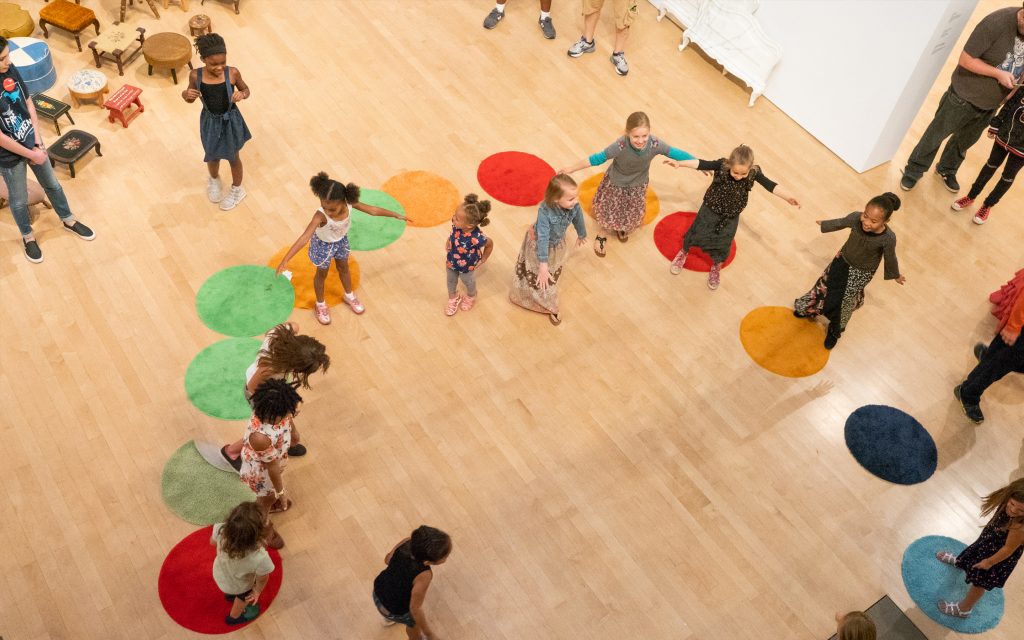
2016
The Museum hosts Michelangelo: Sacred and Profane, Masterpiece Drawings from the Casa Buonarroti, the first time works by the Renaissance master have ever been on view in Arizona in the state’s century-long history. The Museum also features the first of a new triennial exhibition, Phoenix Rising: The Valley Collects, which features some of the most important works in Arizona collections, including those by Degas, Monet, and Picasso and spanning 2,000 years of art history.
The Museum presents Kehinde Wiley: A New Republic, a mid-career retrospective of the internationally acclaimed New York-based artist. The exhibition’s opening night to the public, held on First Friday in October, draws more than 7,000 visitors, the largest First Friday attendance in the Museum’s history.
The Museum establishes the Military Access Program at Phoenix Art Museum, colloquially known as MAP@PAM, which provides free admission to all U.S. veterans and active-duty military service members and their families. The program is established through a generous gift from PetSmart and continued in 2018 by APS.
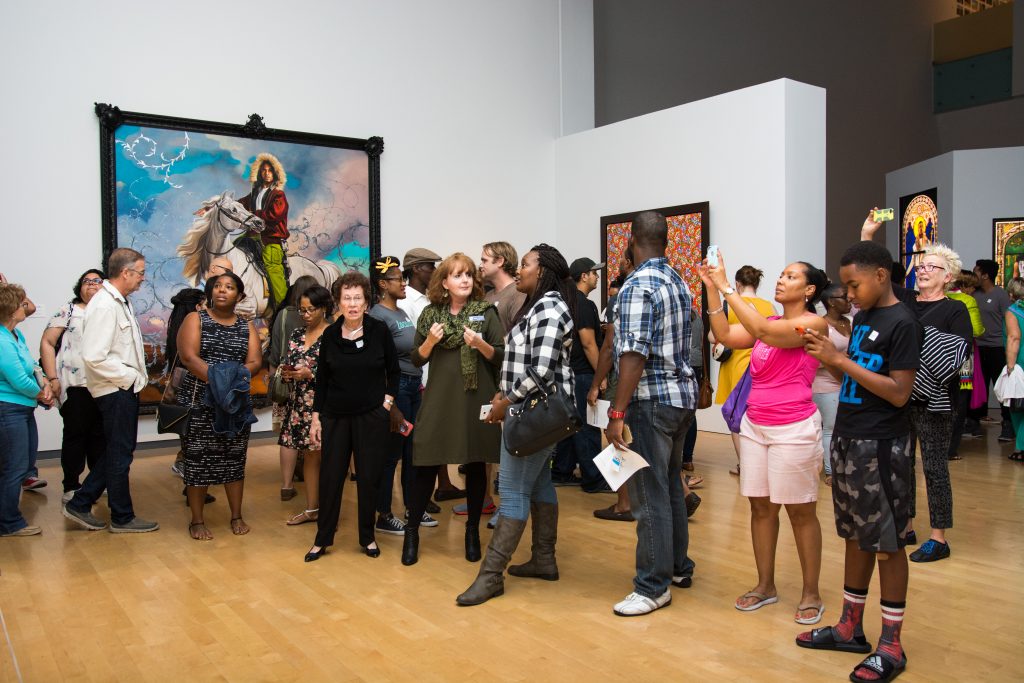
Kehinde Wiley: A New Republic. Installation view. Phoenix Art Museum, 2016.
2017
The Museum announces the establishment of the Dawn and David Lenhardt Contemporary Art Initiative, which seeks to elevate the Museum’s commitment to contemporary art through multiple programs, namely the annual Lenhardt Lecture, the Lenhardt Emerging Artist Acquisition Fund, and a named gallery space, which features a rotating series of loans from the Lenhardt family’s private collection. The Lenhardt Contemporary Art Initiative is the first of its kind in the Museum’s nearly 60-year history and represents a significant commitment to the elevation of Phoenix as a promising cultural player on a national scale.
The Museum is named one of 20 museums throughout the United States to receive funding from the Diversifying Art Museum Leadership Initiative (DAMLI), a partnership between the Walton Family Foundation and the Ford Foundation to support efforts to diversify leadership staff in art museums. The funds awarded to Phoenix Art Museum support the Museum’s Teen Art Council initiative, paid internships for undergraduate and graduate students, and a curatorial fellowship focused on Latinx art.
The Museum receives a major gift of more than 100 contemporary Latin American artworks from Nicholas Pardon, co-founder of the renowned SPACE Collection, the largest collection of post-1990s Latin American abstract art in the United States. The gift significantly increases the Museum’s contemporary Latin American art holdings.
Samurai: Armor from the Ann and Gabriel Barbier Mueller Collection, with 140 objects from the world’s largest collection of samurai armor outside of Japan, draws approximately 50,000 visitors.
2018
The Museum announces a landmark gift from the Papp Family Foundation, which includes the endowment of the Marilyn and L. Roy Papp Family Gallery, funding for the Museum’s collection, and significant examples of Chinese ink painting on scrolls and fans.
The Museum welcomes living-legend Hank Aaron, joined by Commissioner Emeritus of Major League Baseball Bud Selig and ESPN’s Mike Wilbon, to the 2018 Luncheon of Legends, benefiting art and education at the Museum.
Phoenix Art Museum presents renowned artist Jim Hodges as the inaugural speaker for the annual Lenhardt Lecture, a key component of the Dawn and David Lenhardt Contemporary Art Initiative.
In October, the Museum dedicates the Dawn and David Lenhardt Gallery in the Ellen and Howard C. Katz Wing for Modern Art.
The Military Access Program at Phoenix Art Museum, known as MAP@PAM, is renewed through a generous gift of $50,000 from APS.
Phoenix Art Museum presents In the Company of Women: Women Artists from the Collection, the Museum’s first exhibition of works created solely by women from the Museum’s holdings. With nearly 50 20th- and 21st-century artworks, the exhibition inspires conversations about women artists, gender inequality, and revisionist art histories and draws more than 20,000 visitors in just eight weeks.
The Museum announces the renewal of a generous gift from Discount Tire Company to provide free general admission for all guests on the second Sunday of each month during Discount Tire Free Family Sundays.
Phoenix Art Museum and The Steele Foundation partner to present the PhxArt Open for Kids program, offering free admission for all youth 17 and younger from July 1 through September 30, 2018.
The Museum presents its first virtual-reality exhibition, Moonage Virtual Reality, featuring works by video artist Travis Hutchison and immersing visitors in the art and fashion of Andy Warhol, David Bowie, and Kenny Scharf.
The Museum presents Teotihuacan: City of Water, City of Fire, the first major U.S. exhibition on Teotihuacan in more than 20 years. The exhibition features more than 200 artifacts and artworks from the UNESCO World Heritage site, all of which are on view in Arizona for the first time, and draws more than 72,000 visitors. Teotihuacan: City of Water, City of Fire was organized by the de Young Museum, part of the Fine Arts Museums of San Francisco (FAMSF), and the Los Angeles County Museum of Art (LACMA) in collaboration with the Secretaría de Cultura through the Instituto Nacional de Antropología e Historia de México.
Shara Hughes is the inaugural speaker at the Museum’s first annual Lenhardt Emerging Artist Lecture.
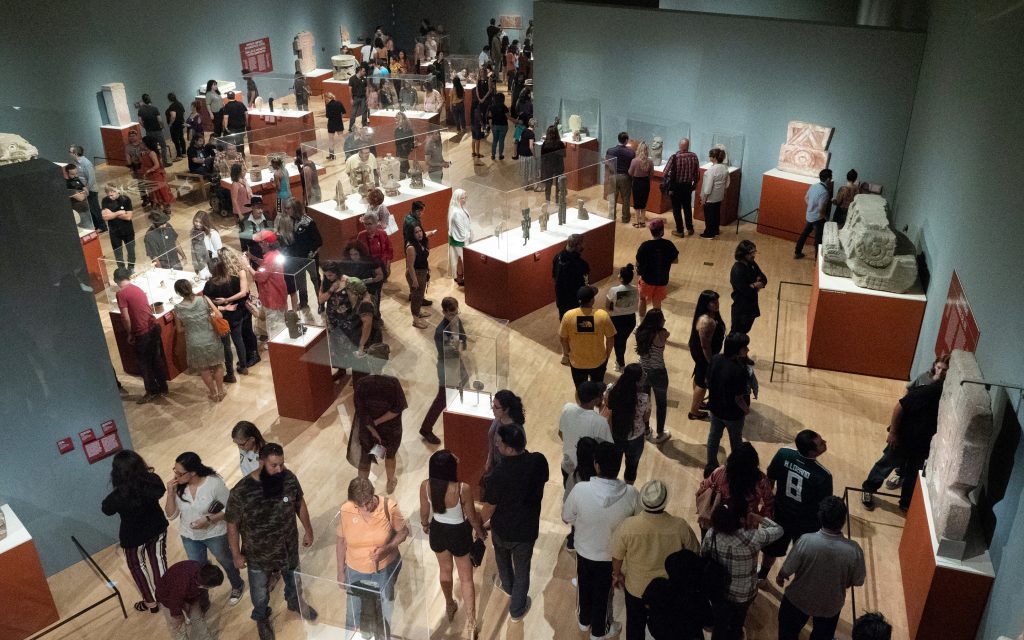
Teotihuacan: City of Water, City of Fire. Installation view. Phoenix Art Museum, 2018.
2019
The Museum receives a $50,000 grant from Thunderbirds Charities that matches a portion of the grant awarded to the Museum by the Diversifying Art Museum Leadership Initiative. The grant provides additional core support for programming associated with the Museum’s Teen Art Council.
Phoenix Art Museum presents renowned contemporary artist Daniel Joseph Martinez at the second annual Lenhardt Lecture.
Amada Cruz concludes her service as the Museum’s Sybil Harrington Director and CEO to accept the position of the Illsley Ball Nordstrom Director and CEO of Seattle Art Museum. Phoenix Art Museum begins a national search for its next Sybil Harrington Director and CEO, led by Koya Leadership Partners. Chief Financial Officer Mark Koenig is named interim director, and Selig Family Chief Curator Gilbert Vicario is named Deputy Director for Curatorial Affairs.
After nearly 20 years at the Museum, Dennita Sewell, the Jacquie Dorrance Curator of Fashion Design, departs to oversee the development of a Bachelor of Arts program in fashion at the School of Art at Arizona State University’s Herberger Institute for Design and the Arts. The Museum begins an international search for its next Jacquie Dorrance Curator of Fashion Design, and Helen Jean is named interim curator of fashion design.
Vanessa Davidson, PhD, the Shawn and Joe Lampe Curator of Latin American Art, departs Phoenix Art Museum after nearly eight years to serve as the curator of Latin American art at the Blanton Museum of Art at the University of Texas at Austin. Phoenix Art Museum begins an international search for its next Shawn and Joe Lampe Curator of Latin American Art.
Phoenix Art Museum and the Center for Creative Photography name Audrey Sands, PhD, the new Norton Family Assistant Curator of Photography, a joint appointment between the two Arizona institutions.
The Museum hosts its annual fall gala, The pARTy in the Garden, in celebration of its 60th anniversary. The evening honors longtime supporters and local philanthropists Ellen and Howard Katz, and Legends of Speed, the Museum’s first exhibition of vintage race cars, premieres to gala guests before opening to the public.
Renowned British artist Martin Creed performs his one-person show Getting Changed at Phoenix Art Museum.
Arcmanoro Niles is the speaker at the Museum’s second annual Lenhardt Emerging Artist Lecture.
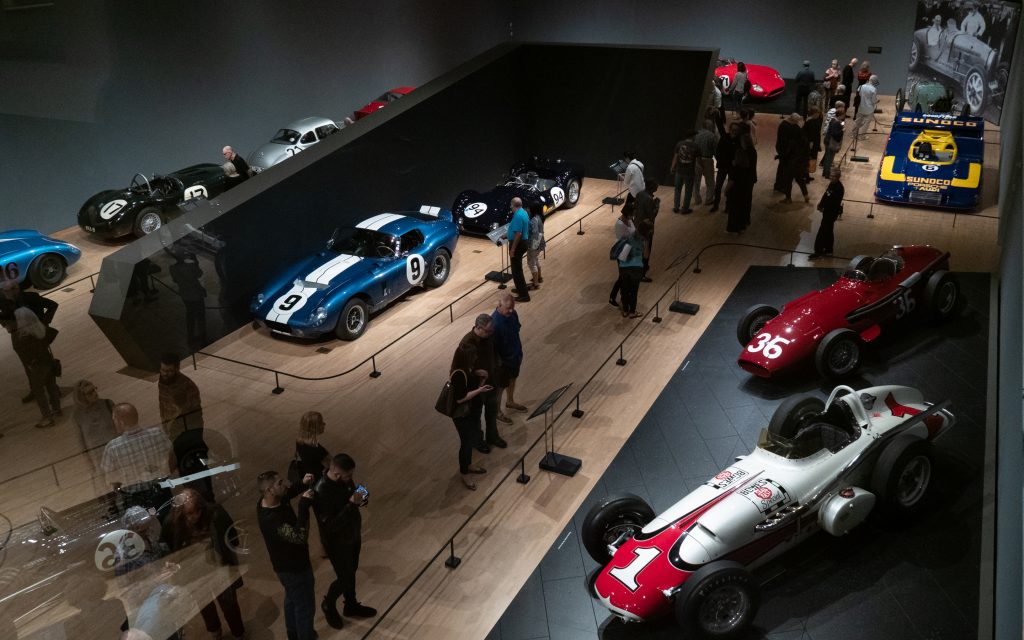
Installation view, Legends of Speed, 2019. Phoenix Art Museum.
2020
Phoenix Art Museum launches Creative Saturdays: Free Under 18, featuring free admission for youth 17 and younger and intergenerational arts education programming on the last Saturday of each month.
The Museum launches new monthly Membership subscriptions to provide a flexible, affordable Membership option for its visitors and community.
The Museum accepts a significant gift of Geoffrey Beene fashion designs from Patsy Tarr, becoming one of the nation’s leading institutions with holdings of Beene’s designs and establishing the Geoffrey Beene Archive at Phoenix Art Museum.
Phoenix Art Museum appoints Helen Jean as the new Jacquie Dorrance Curator of Fashion Design. The Museum premieres India: Fashion’s Muse, the first exhibition curated by Jean.
The Museum hosts the 10th-annual Independent Woman Luncheon. The event presents internationally acclaimed interior designer Martyn Lawrence Bullard and honors Ellen Katz, who founded the event in 2011.
Phoenix Art Museum relaunches its website, phxart.org, and becomes the first major U.S. art museum with a fully bilingual website in both English and Spanish. The redesign and launch of the Museum’s website are made possible through the profound generosity of Virginia G. Piper Charitable Trust, with additional funding provided by The Steele Foundation.
On March 16, Phoenix Art Museum closes to the public in response to the COVID-19 pandemic, marking the institution’s first closure in its 60-year history. The Museum shifts its focus to virtual resources and experiences to continue bringing art to its community as Arizona shelters in place. Events such as Senior Coffee Social, First Fridays, and The Whole Story are also migrated to a virtual space.
In April, after an extensive national search, Phoenix Art Museum appoints Timothy R. Rodgers, PhD, as the new Sybil Harrington Director and CEO. Rodgers takes the helm of the Museum on July 1, 2020, in the midst of the COVID-19 pandemic.
In response to national dialogue concerning systemic racism, diversity, equity, accessibility, and inclusion, Phoenix Art Museum reaffirms its commitment to ensuring its collections, exhibitions, and administration reflect the diversity of the Valley community. The Board of Trustees establishes a Diversity, Equity, Accessibility, and Inclusion (DEAI) Committee to undertake a comprehensive study of the Museum’s collections, exhibitions, hiring practices, and administrative structures to identify ways in which the institution can improve its DEAI efforts.
After an extended closure necessitated by the COVID-19 pandemic, Phoenix Art Museum re-opens in October 2020 with new and extended exhibitions.
In honor of the institution’s 60-year history, Phoenix Art Museum premieres three short films, made possible through funding provided by The Steele Foundation as part of a Museum initiative to innovate new digital-engagement efforts and developed by the Museum in collaboration with Arizona-based filmmakers, including local writers, directors, actors, editors, and crew.
The Museum launches Reframed, an initiative that invites artists and scholars from communities historically excluded from museum spaces to contribute their perspectives and knowledge on works in the Museum’s collection.
In response to the impact of the COVID-19 pandemic on Arizona families, Phoenix Art Museum, in partnership with local donors and community partners, launches the PhxArt Field Trip for Kids program, which reduces admission by 60% for all visitors younger than 18 from $14 to the institution’s field-trip rate of $5 per youth.
The Museum presents Teresita Fernández and Amalia Mesa-Bains as speakers for the third annual Lenhardt Lecture.
Phoenix Art Museum and Arizona Costume Institute virtually unveil the Museum’s new Geoffrey Beene Archive.
2021
Phoenix Art Museum announces the expansion of the Lenhardt Contemporary Art Initiative to support the diversification of its contemporary art collection through the acquisition of works by artists contributing to discourses on race, gender, and other social concerns, including those by Black, Indigenous, Latinx, and women artists, among others. The first artwork acquired through the expanded initiative is The Futility of Achievement (2020) by Derek Fordjour.
Phoenix Art Museum presents Fearless Fashion: Rudi Gernreich, an exhibition organized by the Skirball Cultural Center, Los Angeles, that focuses on the significant social and cultural impact of the acclaimed designer best known for innovative designs such as the “monokini” topless swimsuit, the thong, unisex clothing, and pantsuits for women.
The Museum announces the establishment of the Sally and Richard Lehmann Emerging Artist Awards (Lehmann Emerging Artist Awards), an annual grants program that supports emerging Arizona-based artists.
After completing one year as the Sybil Harrington Director and CEO, Timothy R. Rodgers, PhD, concludes his service with the Museum upon accepting the position of the Nanette L. Laitman Director with the Museum of Arts and Design (MAD) in New York City. The Museum’s Board of Trustees appoints CFOO Mark Koenig as the Interim Sybil Harrington Director and CEO and begins a national director search.
On September 13, Phoenix Art Museums receive a transformative $4 million grant from Virginia C. Piper Charitable Trust, which represents the largest grant the Museum has ever received from the Trust and one of the largest single grants the Museum has received in its 60-year history from any philanthropic organization or grantmaking body.
In October, the Museum receives a $240,746 grant from the National Endowment for the Humanities (NEH), the first in the institution’s recent history since 2012. The award provides vital support for the special-engagement exhibition Landscapes of Extraction: The Art of Mining in the American West and its accompanying publication.
Phoenix Art Museum presents Oscar Muñoz: Invisibilia, the first retrospective of work by the renowned Colombian artist in the United States.
Derek Fordjour presents as the fall 2021 Lenhardt Lecture.
The Museum reopens The Ullman Center for the Art of Philip C. Curtis, located on the first floor of the Museum’s North Wing, following gallery enhancements.
Phoenix Art Museum presents Landscapes of Extraction: The Art of Mining in the American West, featuring more than 65 works created from the 1910s through today that depict regional landscapes of enterprise and examines how mining has altered the natural environment on a spectacular scale.
Phoenix Art Museum names Sama Alshaibi as the recipient of the 2021 Arlene and Morton Scult Artist Award and Gloria Martinez-Granados, Chris Vena, and Sam Frésquez and Merryn Omotayo Alaka as the recipients of the inaugural Sally and Richard Lehmann Emerging Artist Awards.
Phoenix Art Museum presents Legacy of Ceylon: Art and Photography of Sri Lanka, featuring a selection of rare and outstanding Sri Lankan artworks that span 1,000 years.
Phoenix Art Museum presents Generation Paper: Fast Fashion of the 1960s, showcasing more than 80 rare garments and accessories made from paper, plastic, laminate, and other nonwoven textiles.
2022
Phoenix Art Museum presents Farewell Photography: The Hitachi Collection of Postwar Japanese Photographs, 1961-1989, a major exhibition of postwar Japanese avant-garde photography that is organized by the Museum and the Center for Creative Photography.
After an extensive national search, Phoenix Art Museum appoints Jeremy Mikolajczak as the next Sybil Harrington Director and CEO. Mikolajczack takes the helm of the Museum in April 2022. The Museum also appoints Nikki DeLeon Martin, Chief External Affairs Officer, to a new role as the institution’s Deputy Director in June 2022.
After an unprecendented hiatus due to the COVID-19 pandemic, Phoenix Art Museum reinstates its annual gala. The pARTy: The Show Must Go On! honors the enduring legacy of Philip C. Curtis.
Phoenix Art Museum presents the special-engagement exhibition Desert Rider, with works exploring the relationships between transportation, landscape, and identity in our desert region. The exhibition highlights a diverse display of large-scale installations, prints, sculptures, and more by Latinx and Indigenous artists.
Phoenix Art Museum presents And Let It Remain So: Women of the African Diaspora. The major photography exhibition, organized by the Museum and the Center for Creative Photography and curated by Aaron Turner, showcases the work of five photographers who explore ideas of identity, place, and belonging.
About Us
We are at the heart of our city, in more ways than one. Learn about our history, leadership and departments, careers, and more.
MoreDonate
Your tax-deductible gift, of any amount, directly benefits exhibitions, education programs, and vital operations at a place where all people are welcomed to experience the magic and the light of the arts.
MoreCareers
We want you to join our art community. Explore current job openings, internships, and more at Phoenix Art Museum.
MoreMembership
Become a Museum insider, and discover arts and culture as only Members can.
MOREDonate
Art changes lives. So can you. Support your Museum today.
MORECareers
Join the PhxArt team. We can accomplish amazing things together.
MOREPress Room
Discover the latest news and updates on arts, events, and programs.
MORE